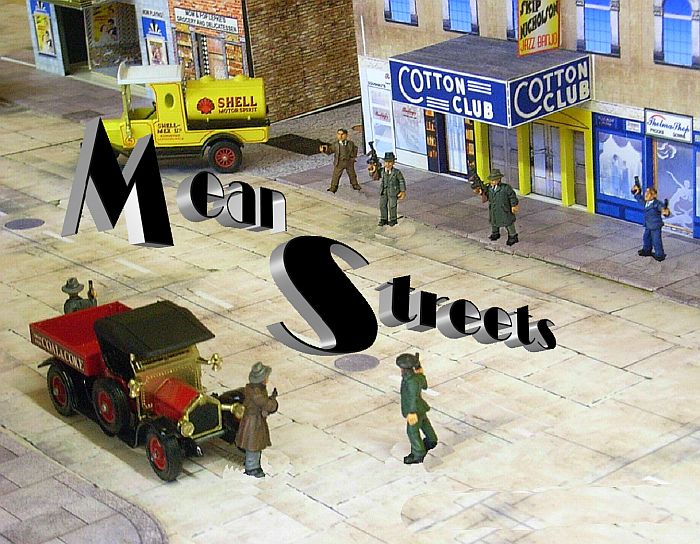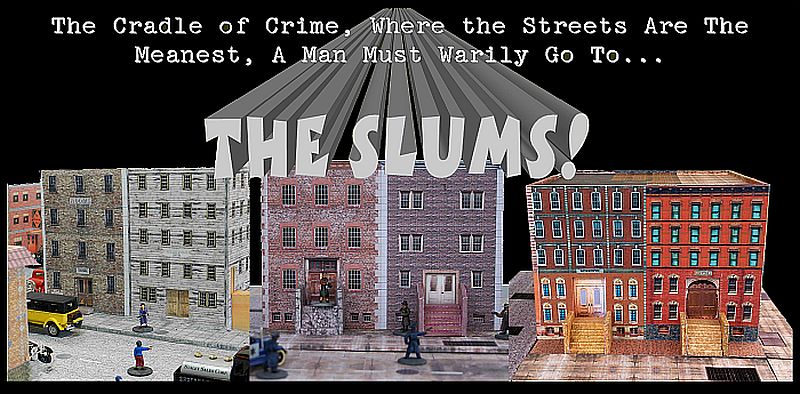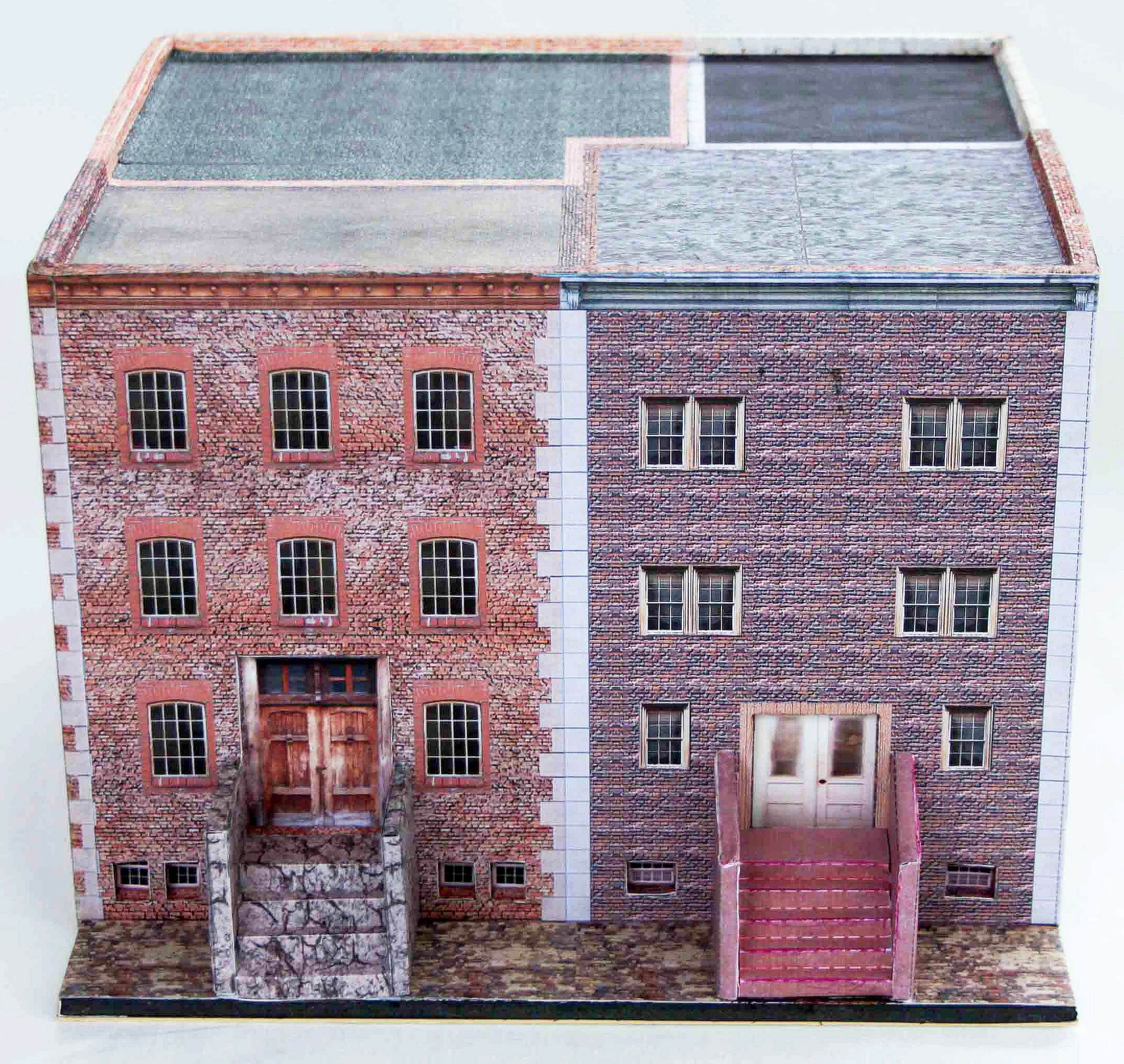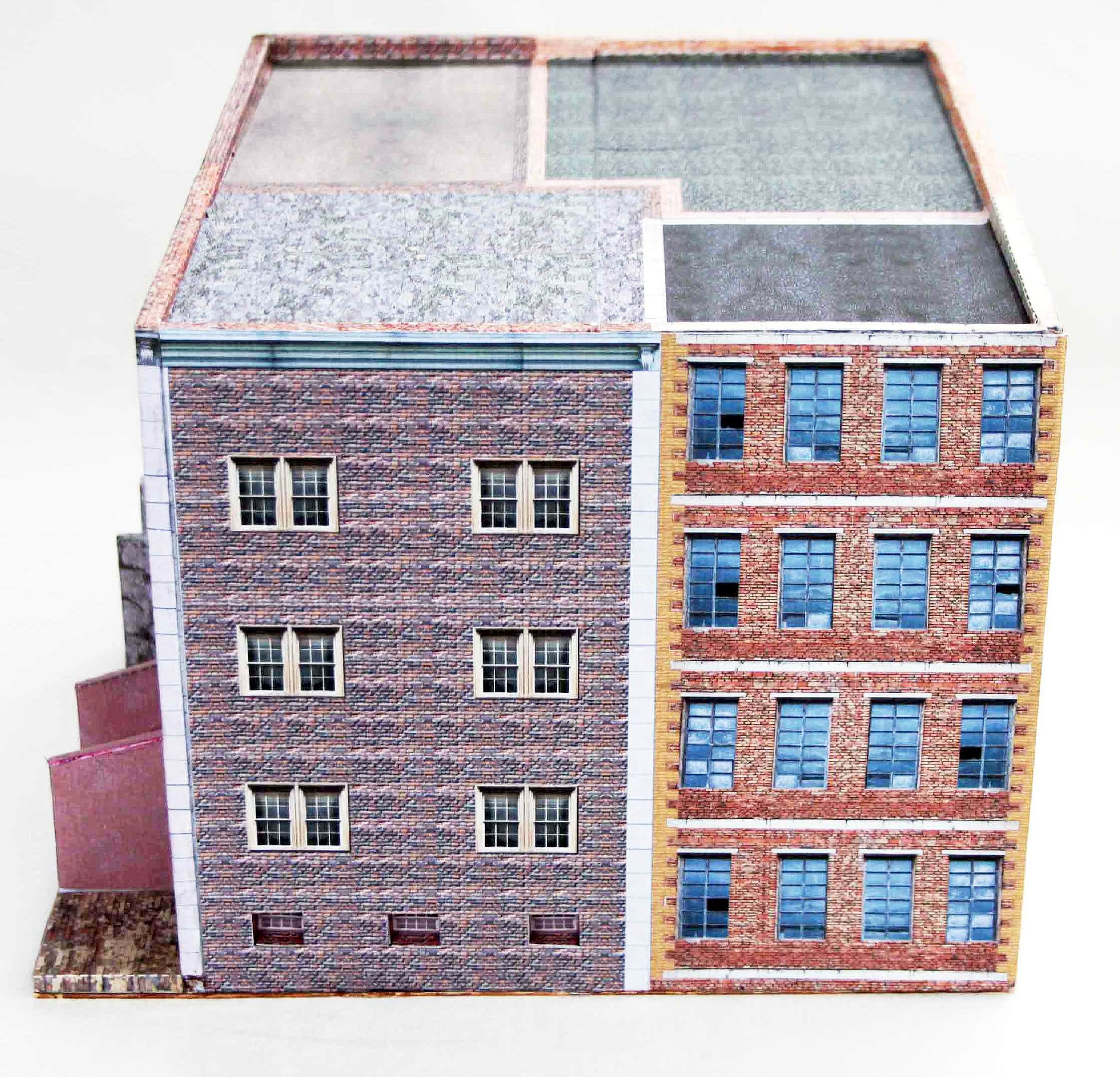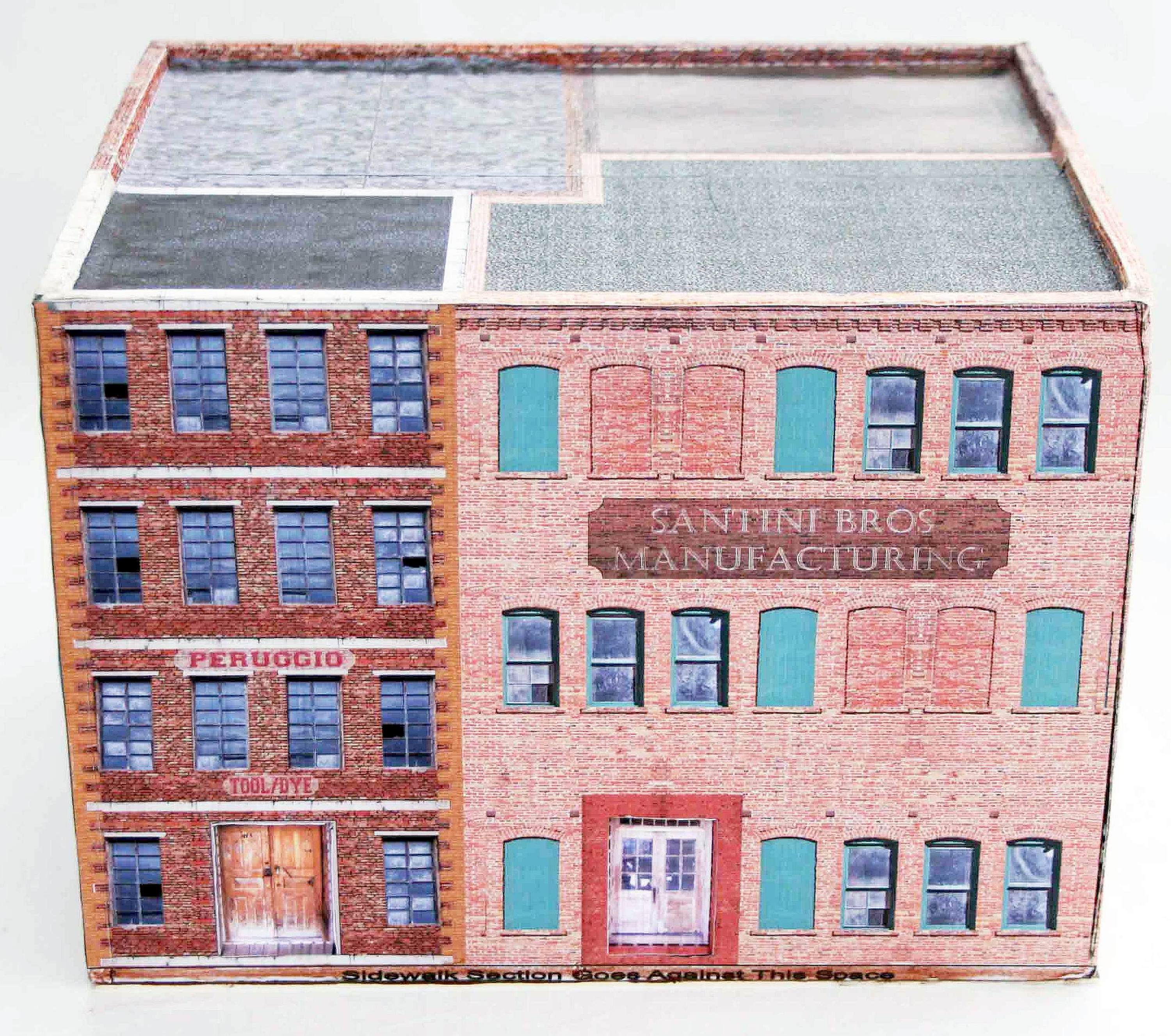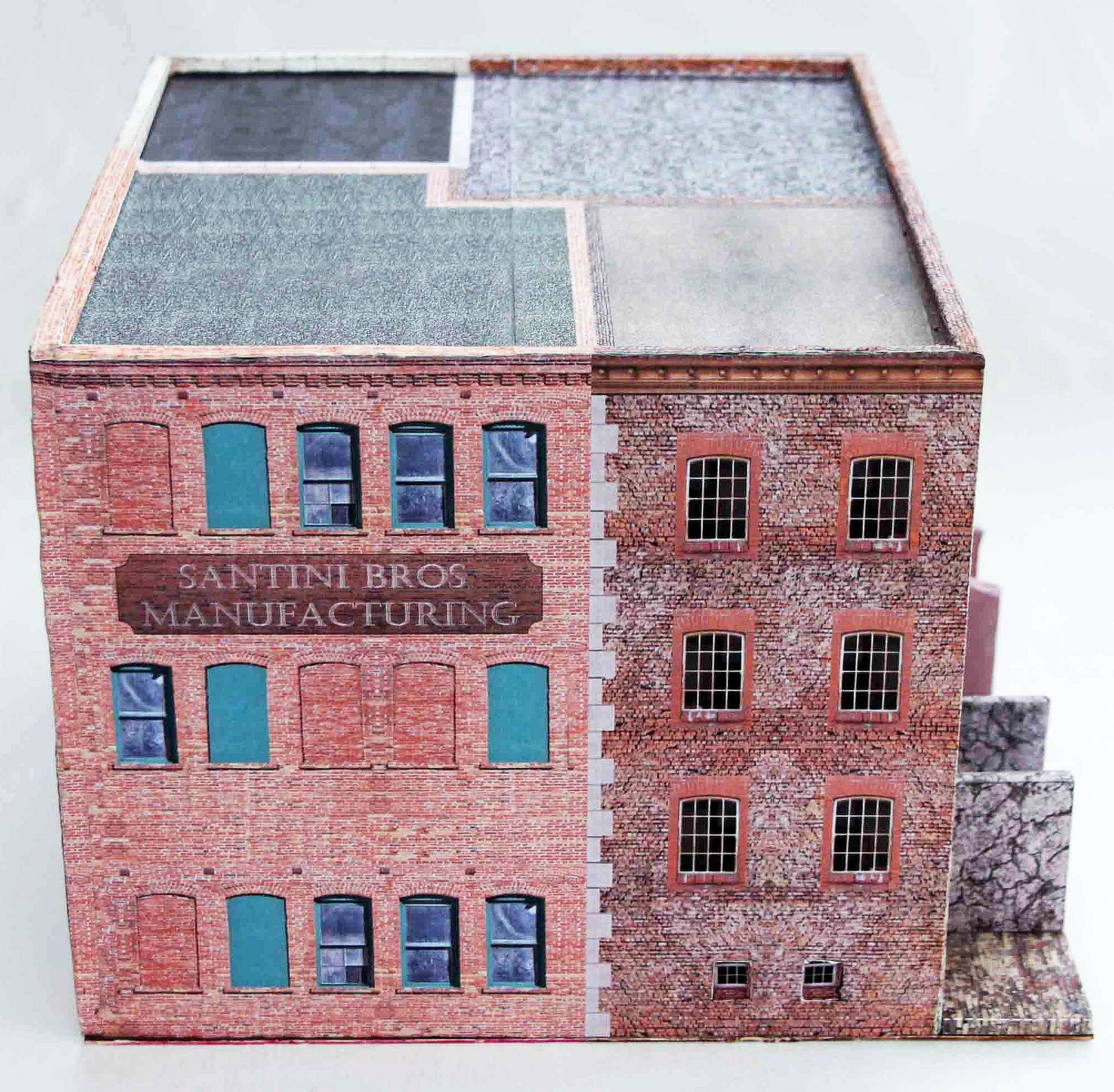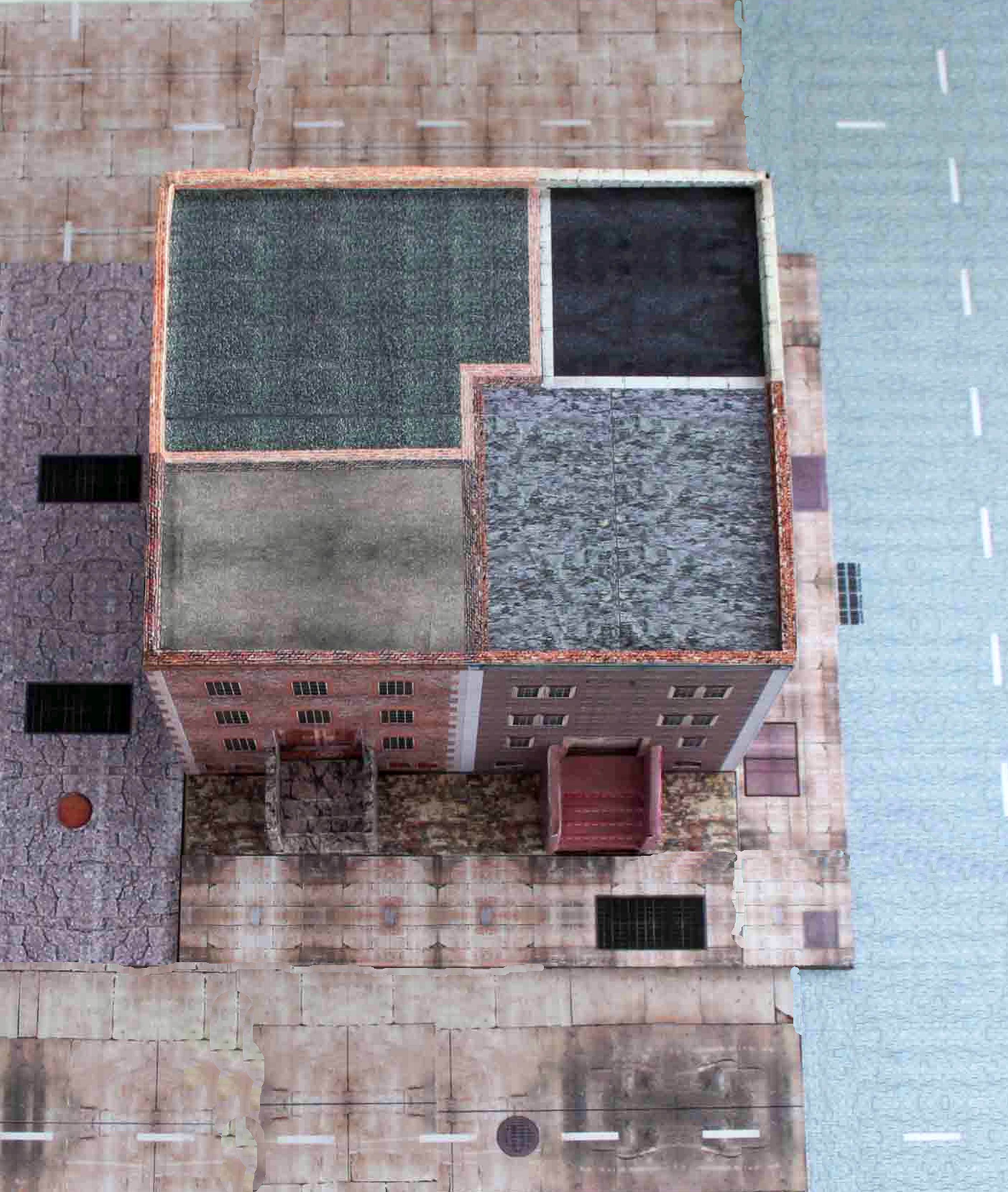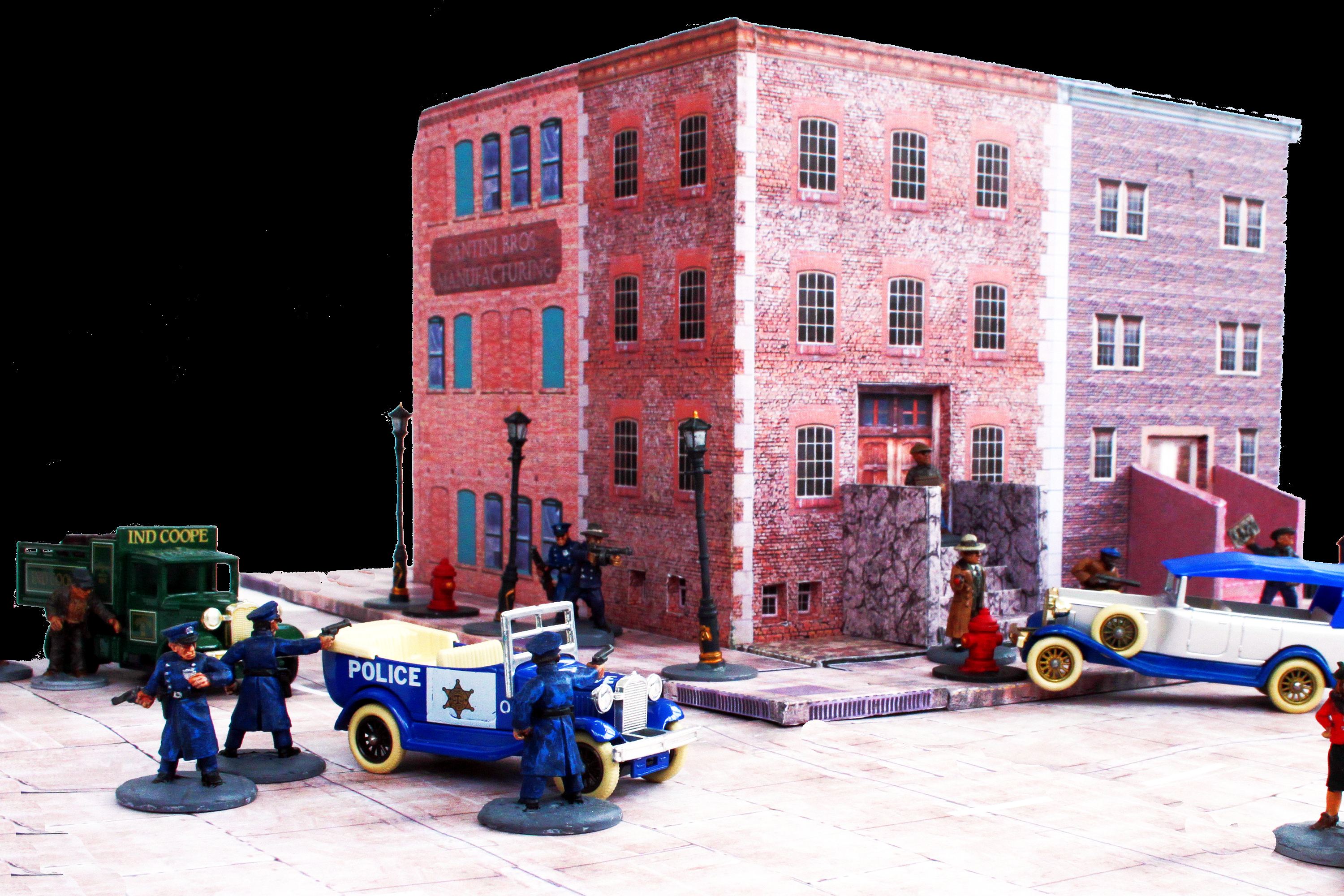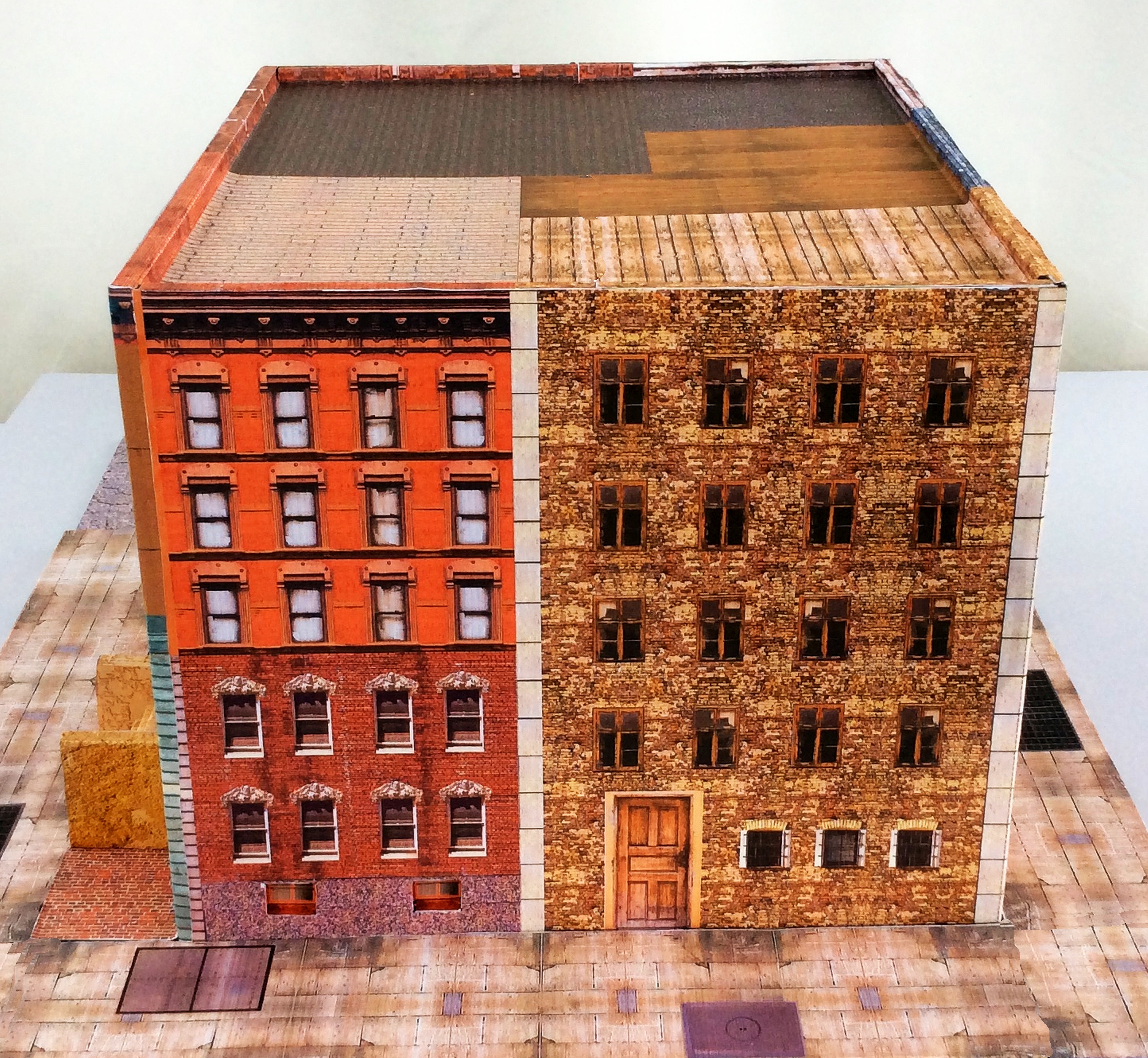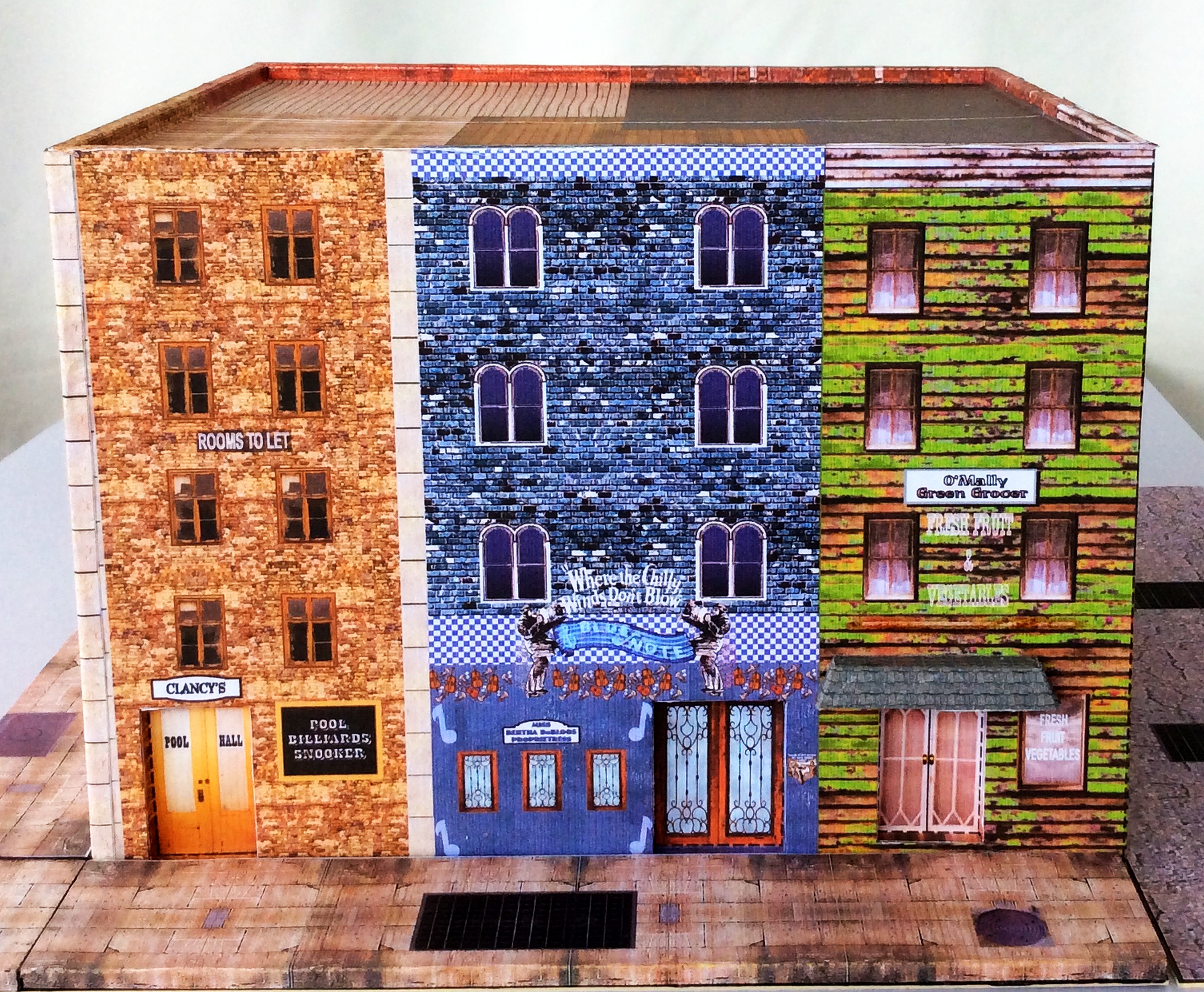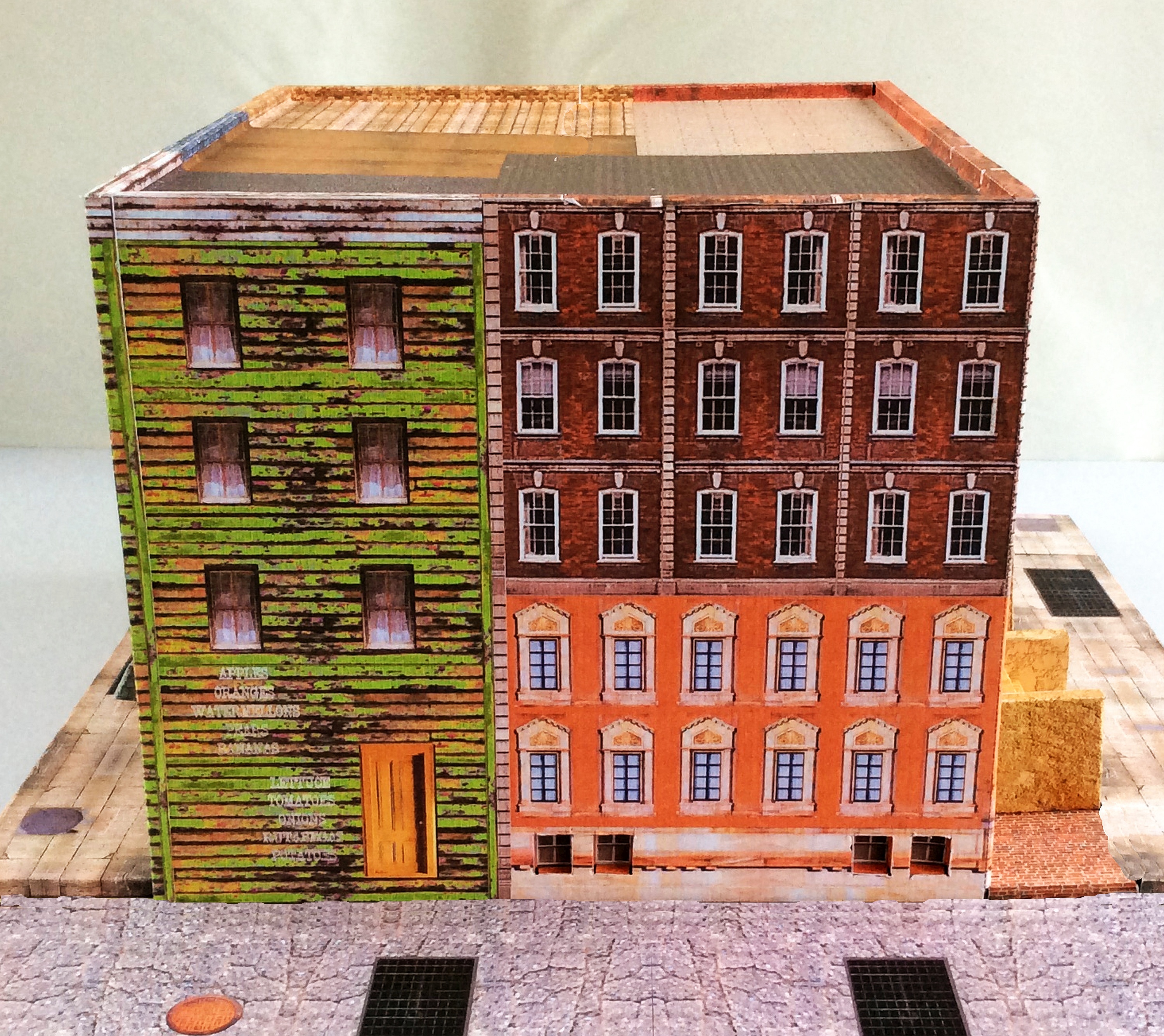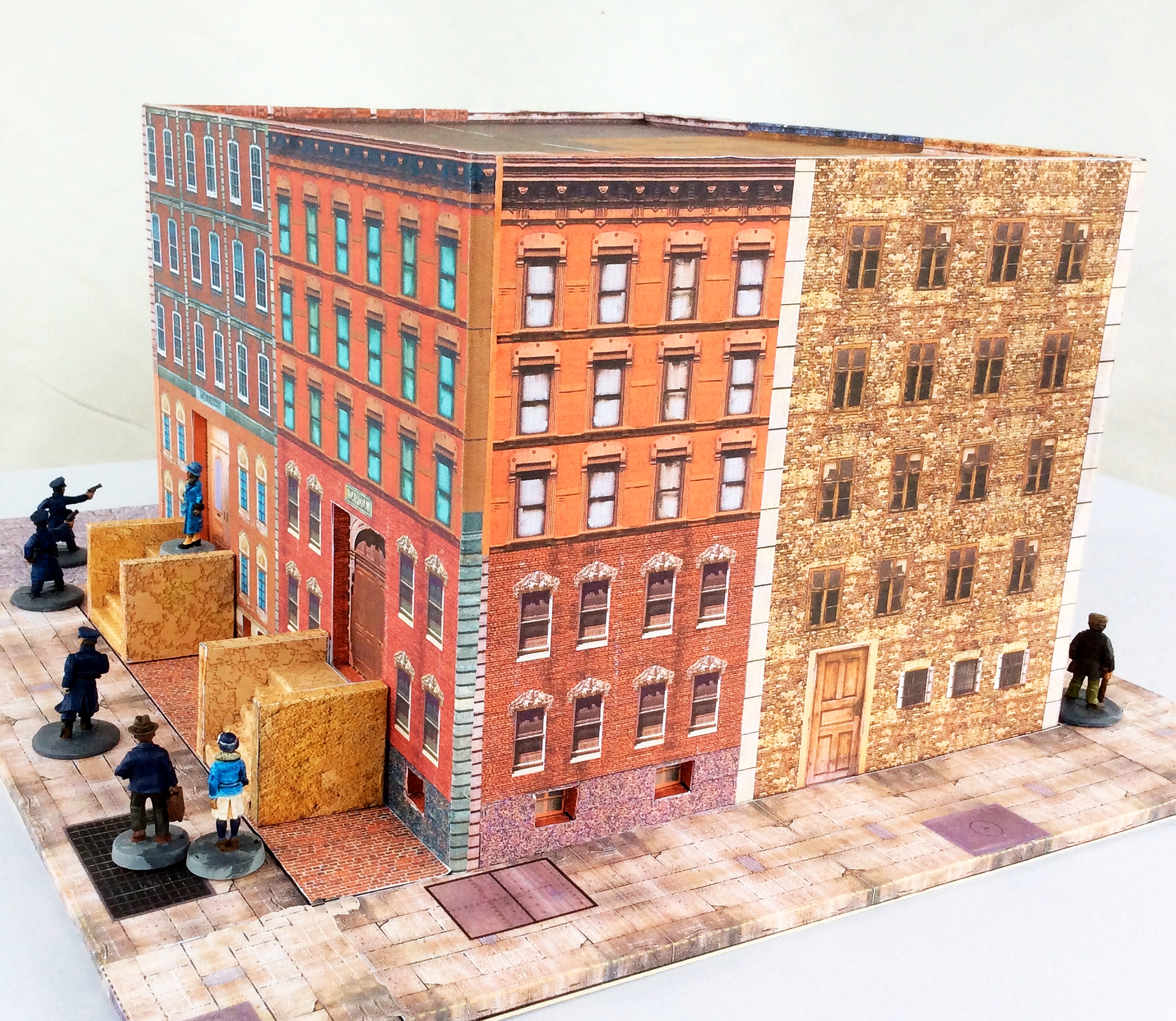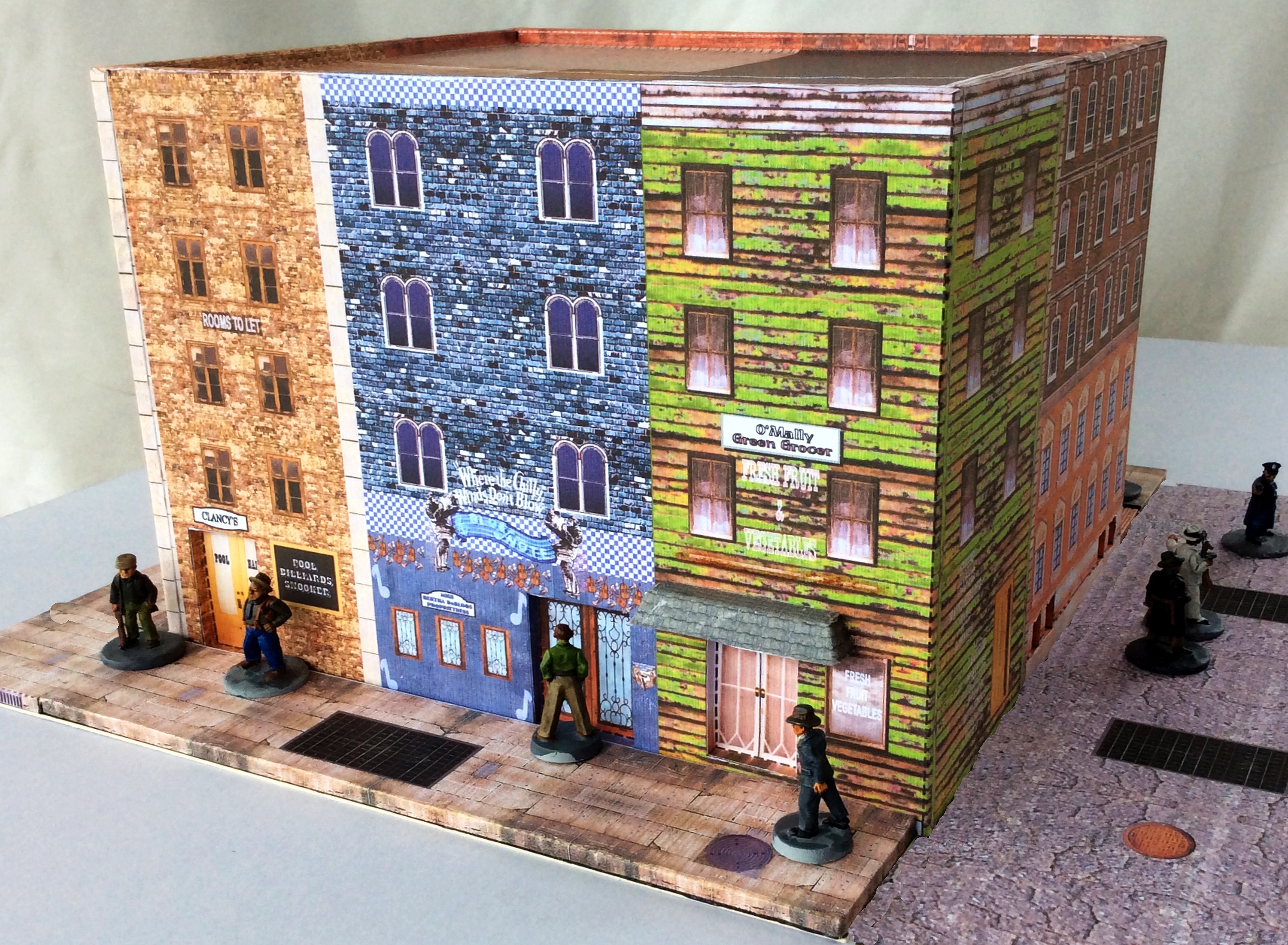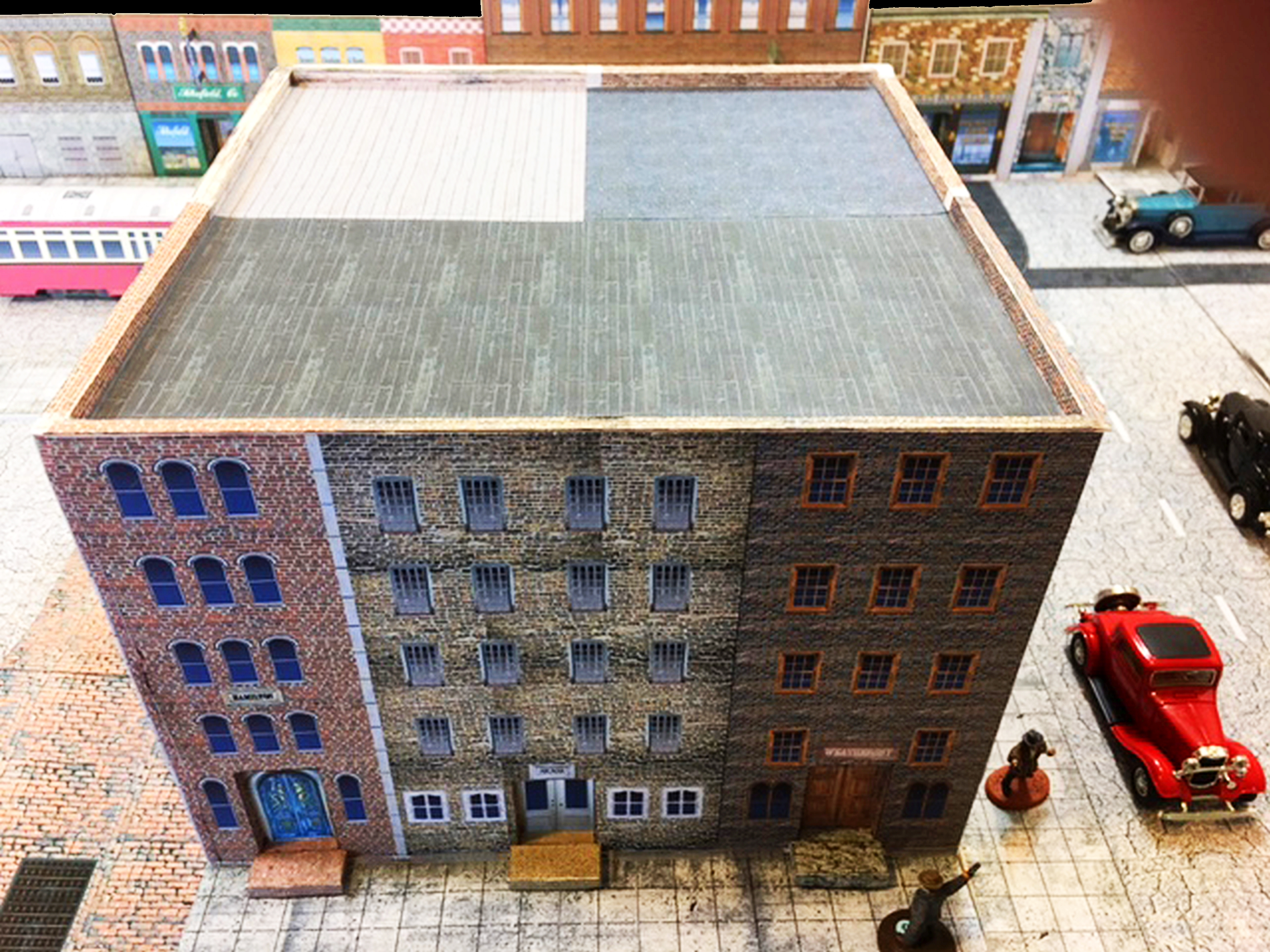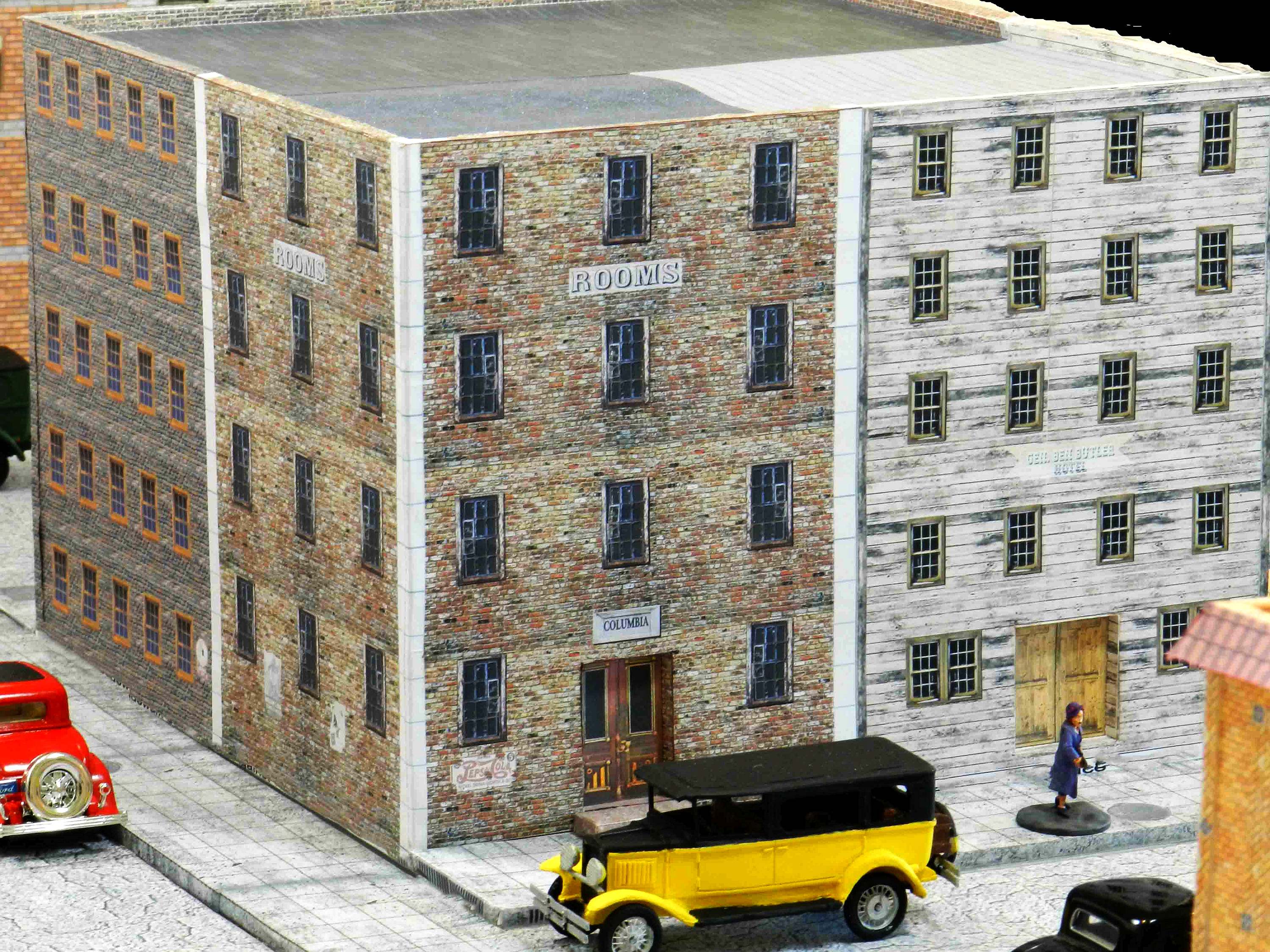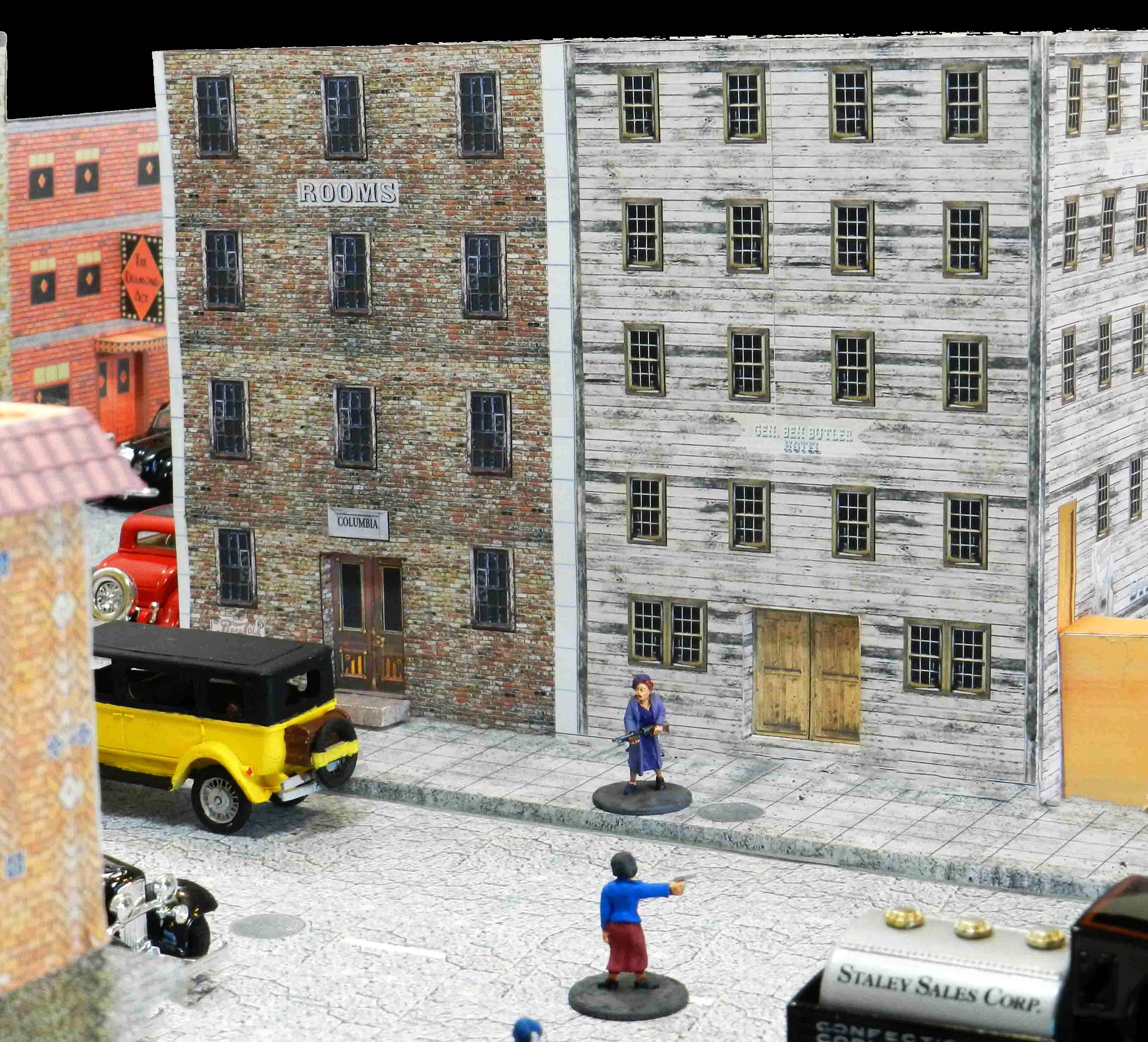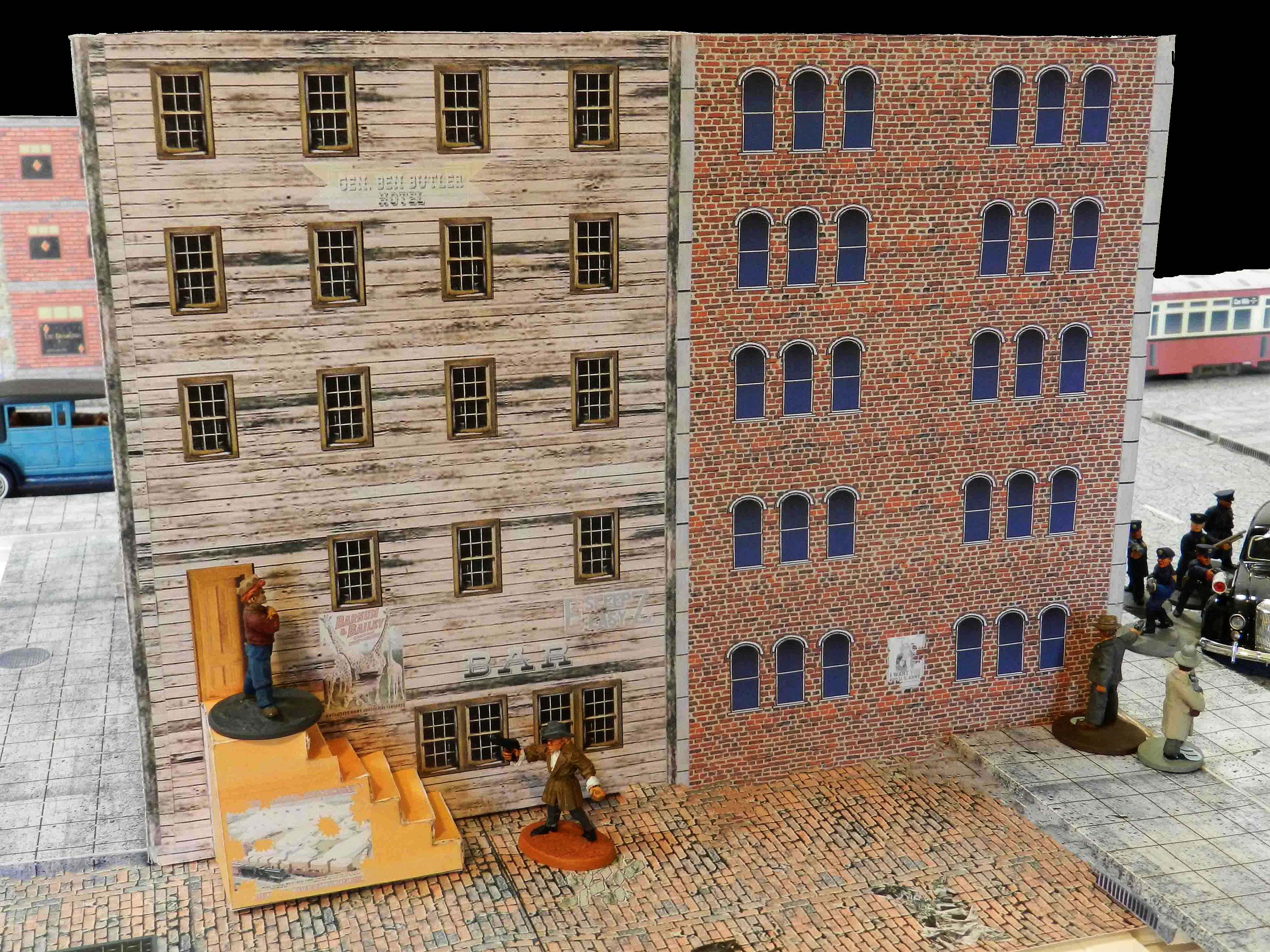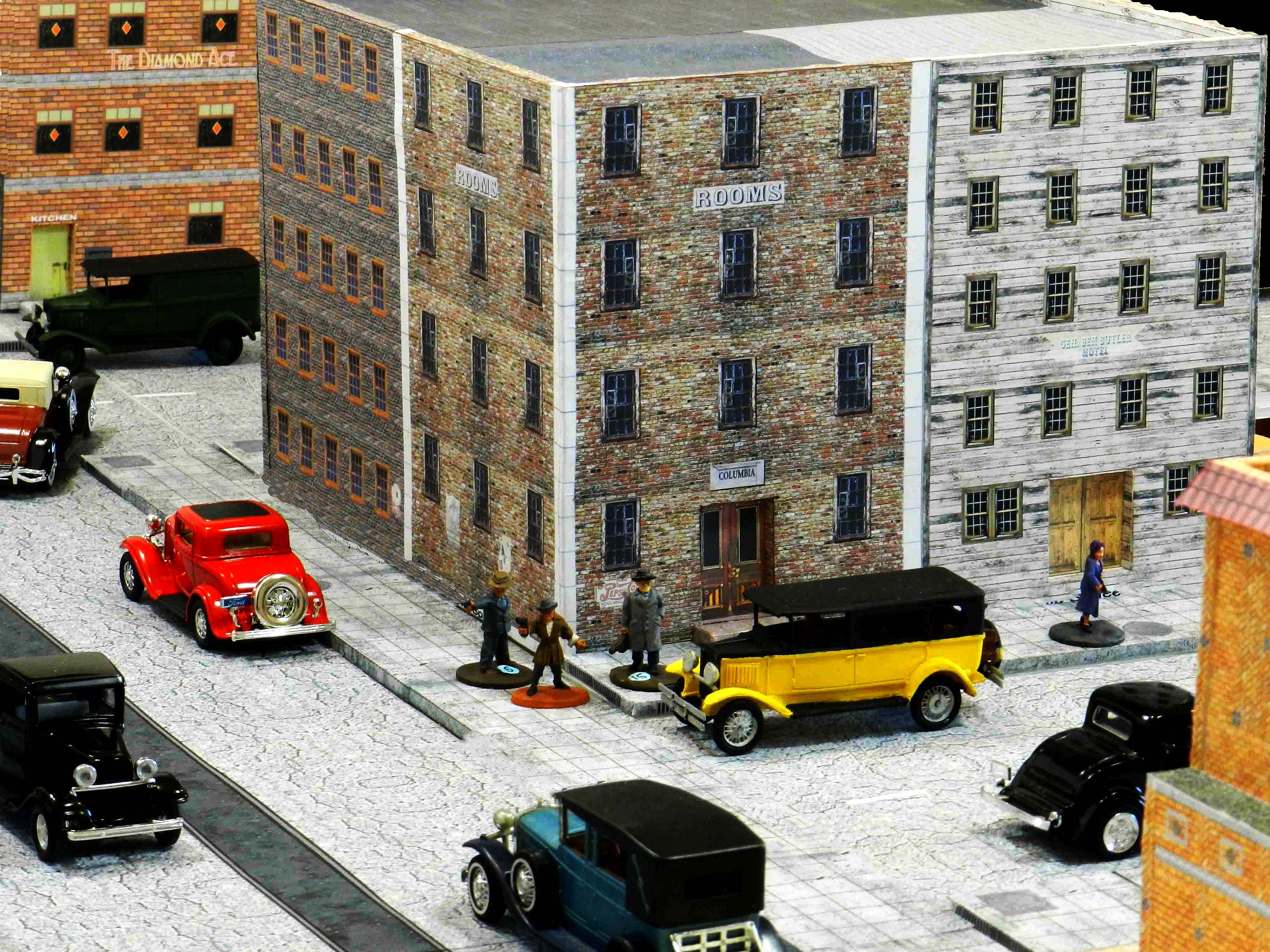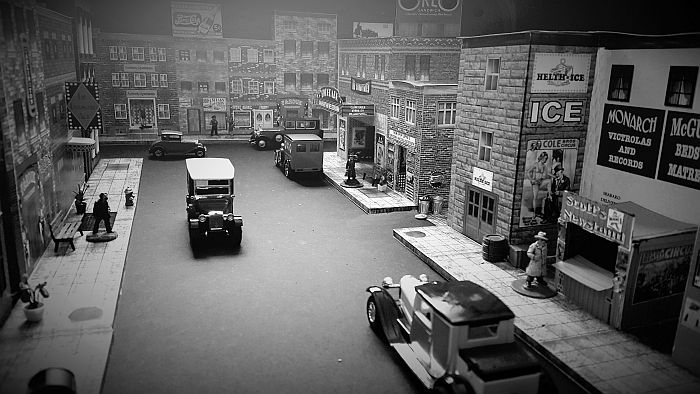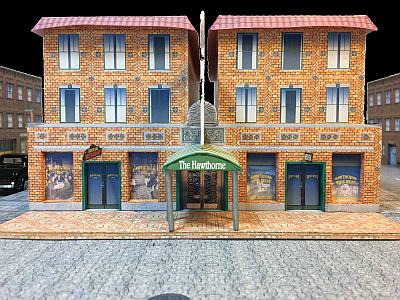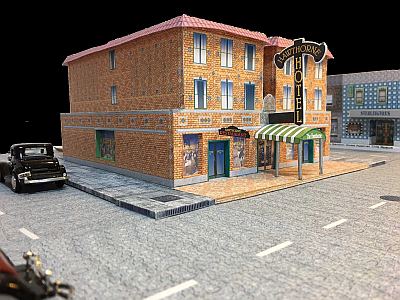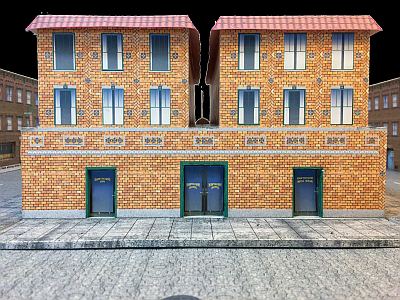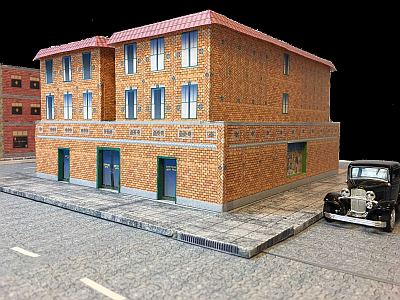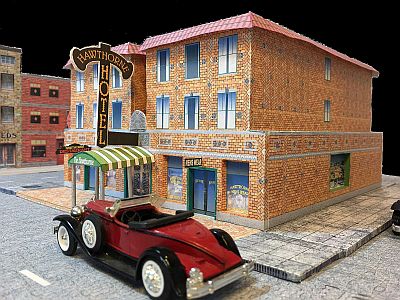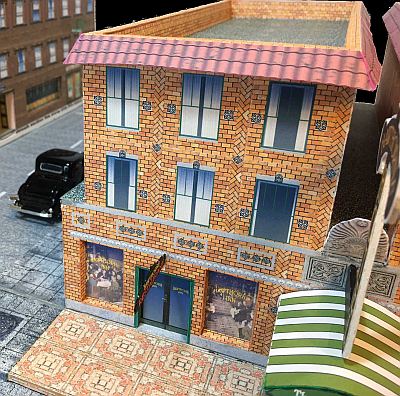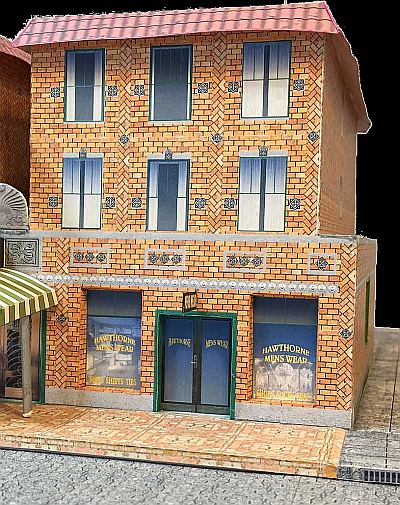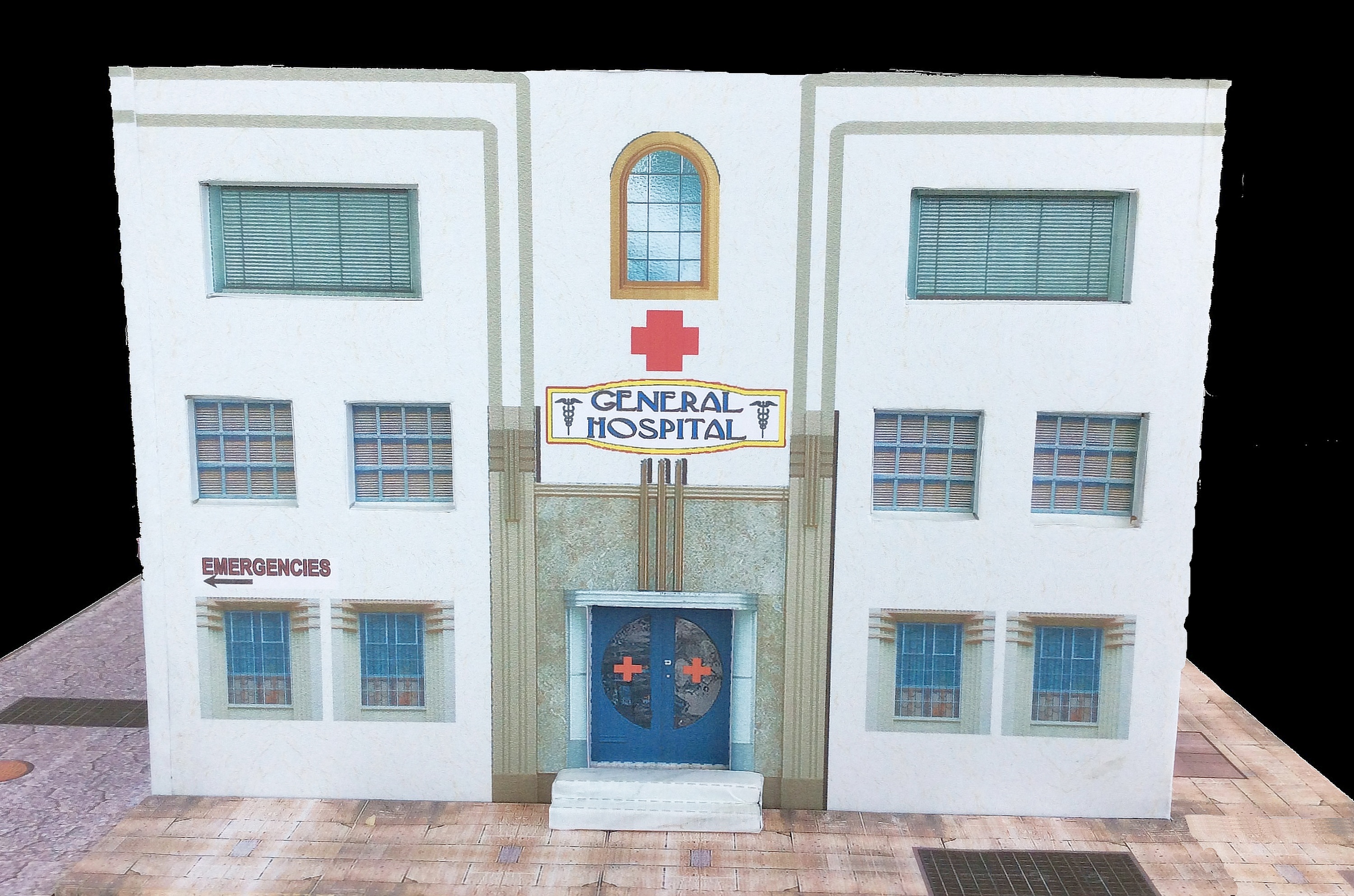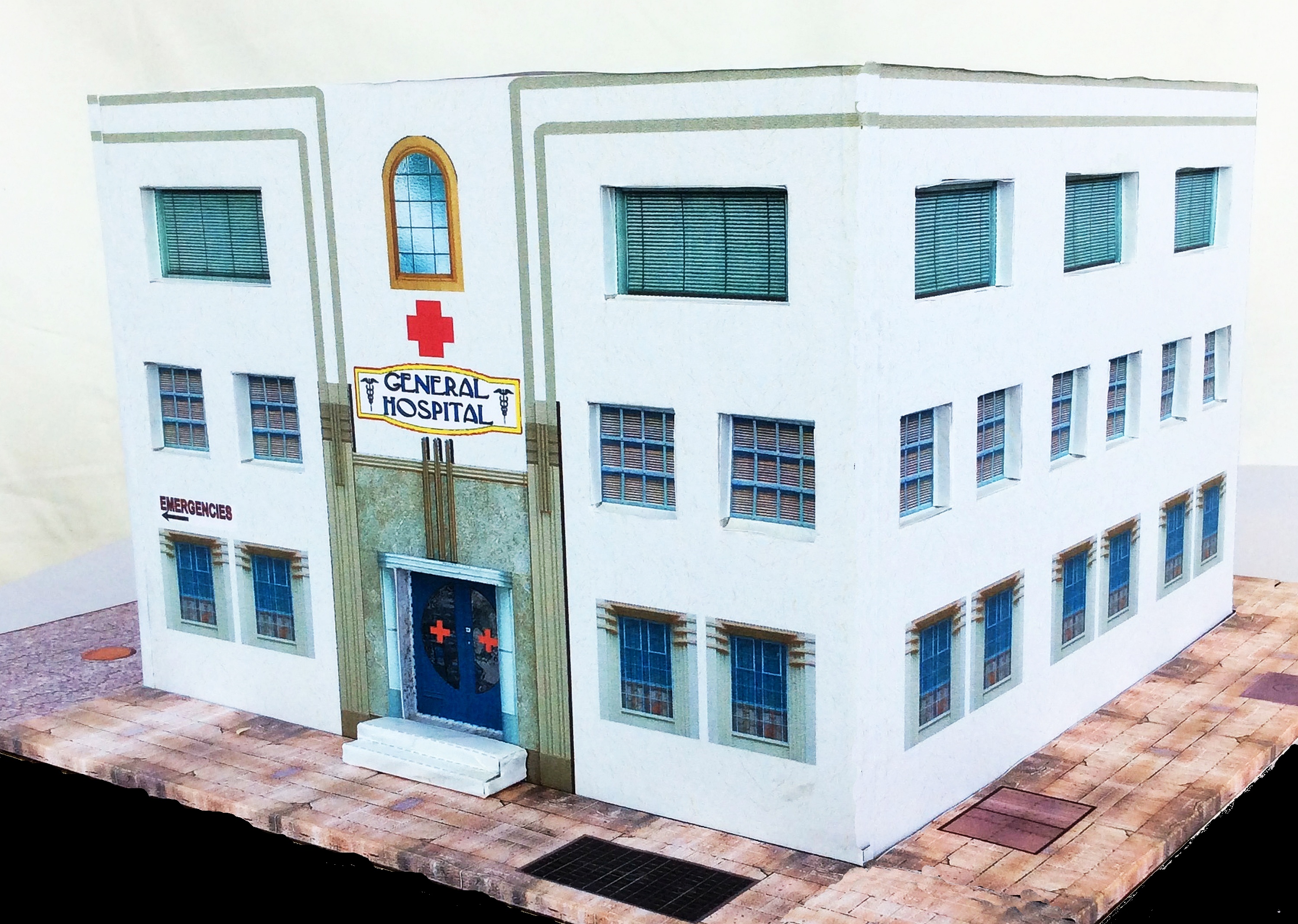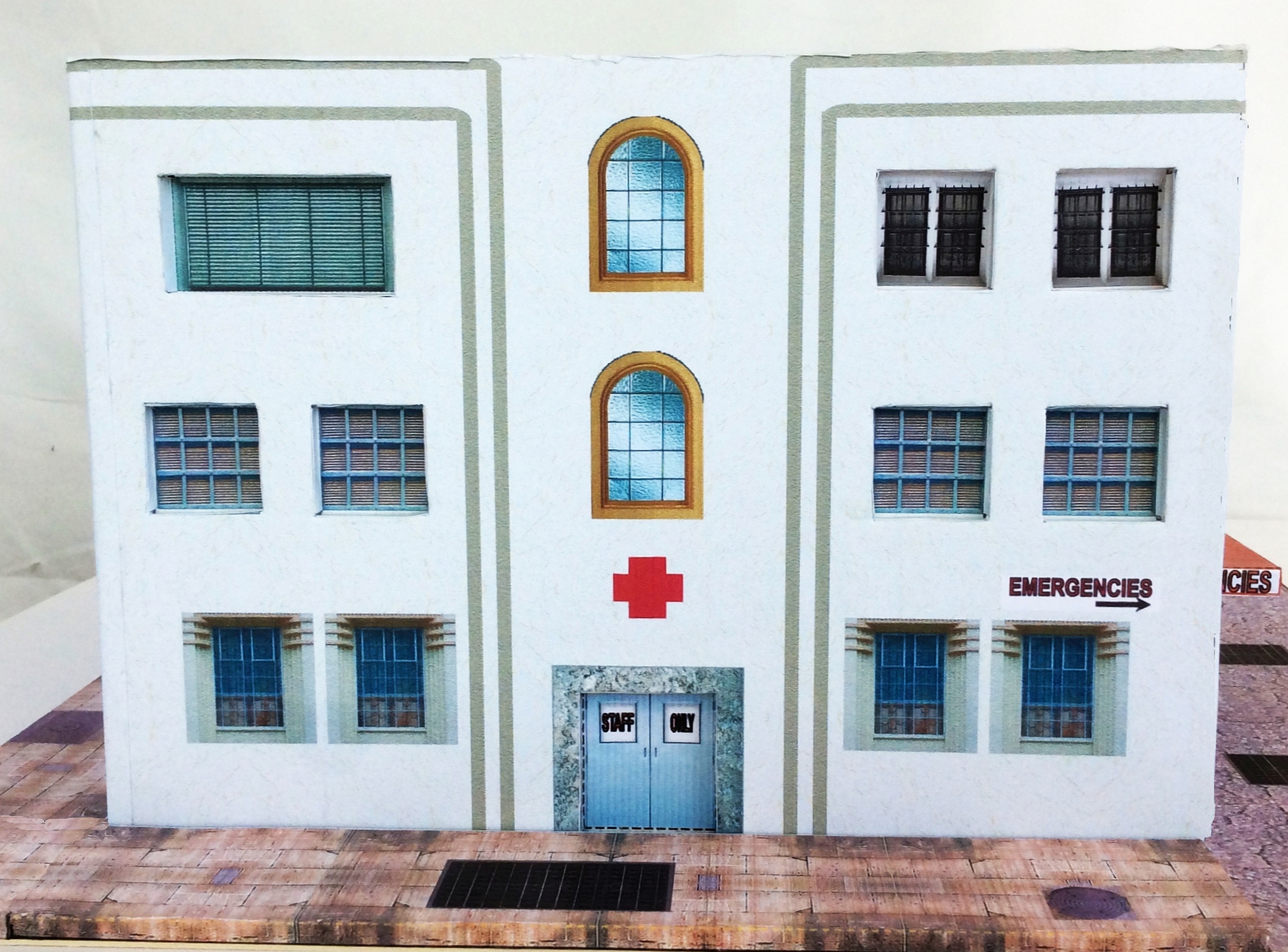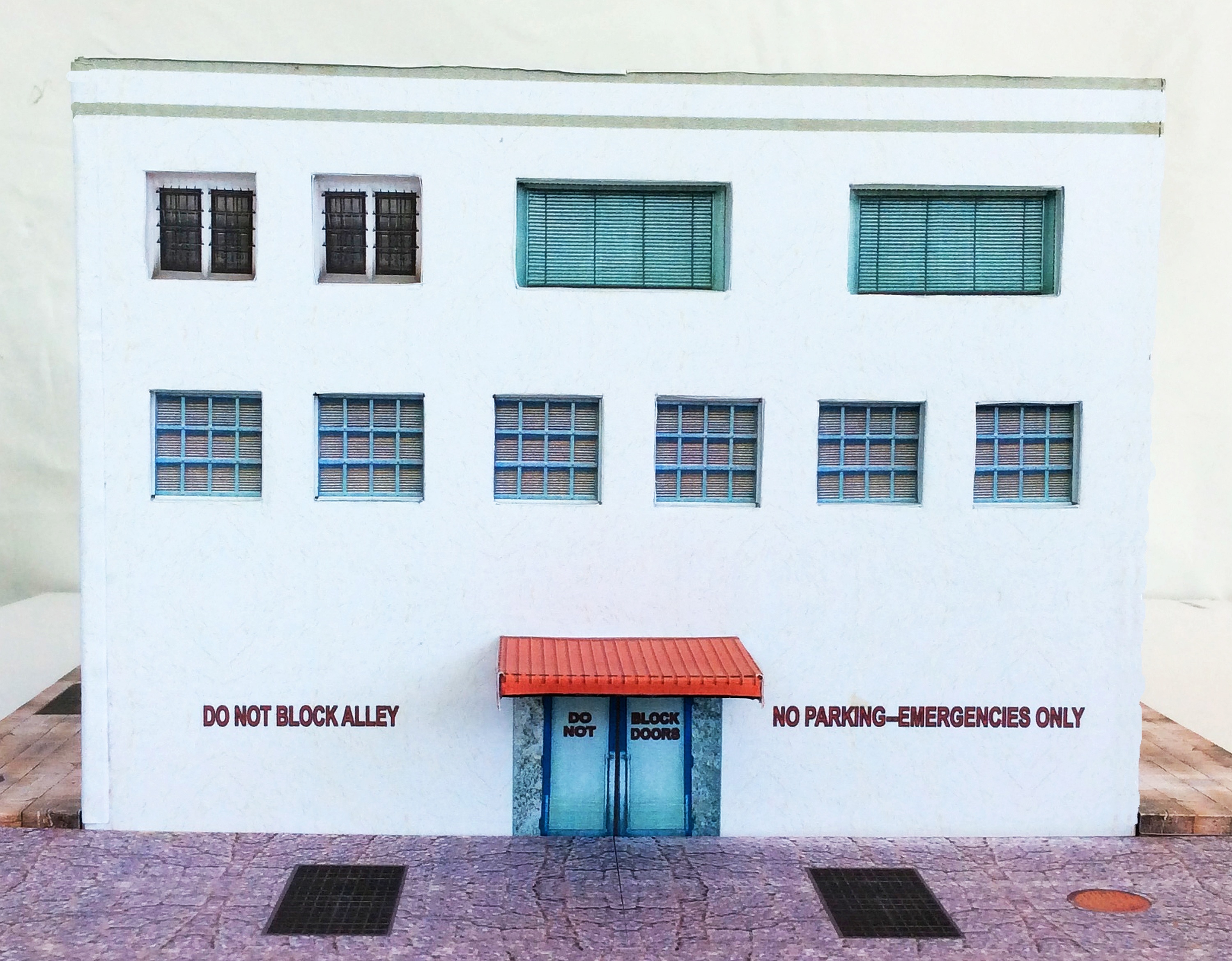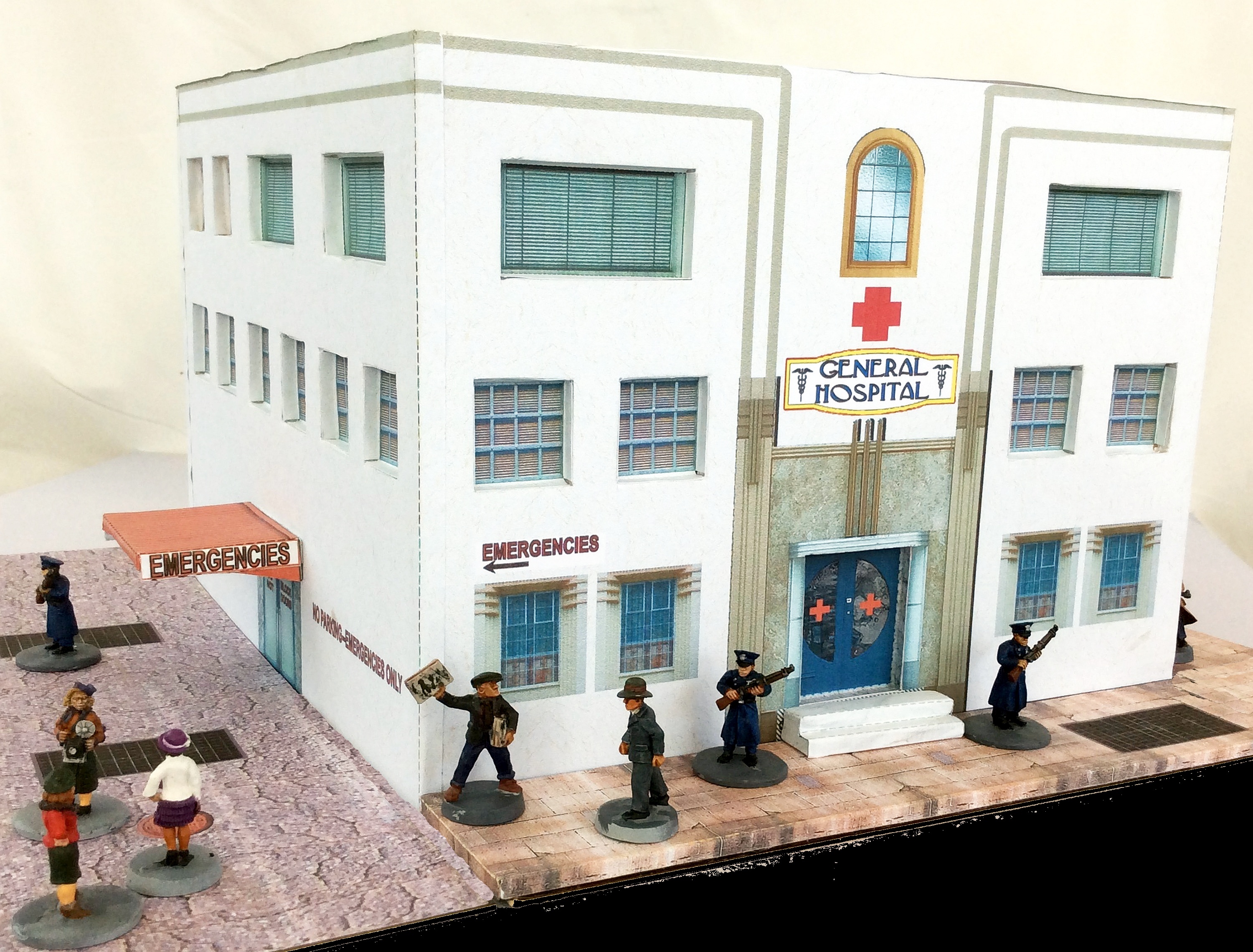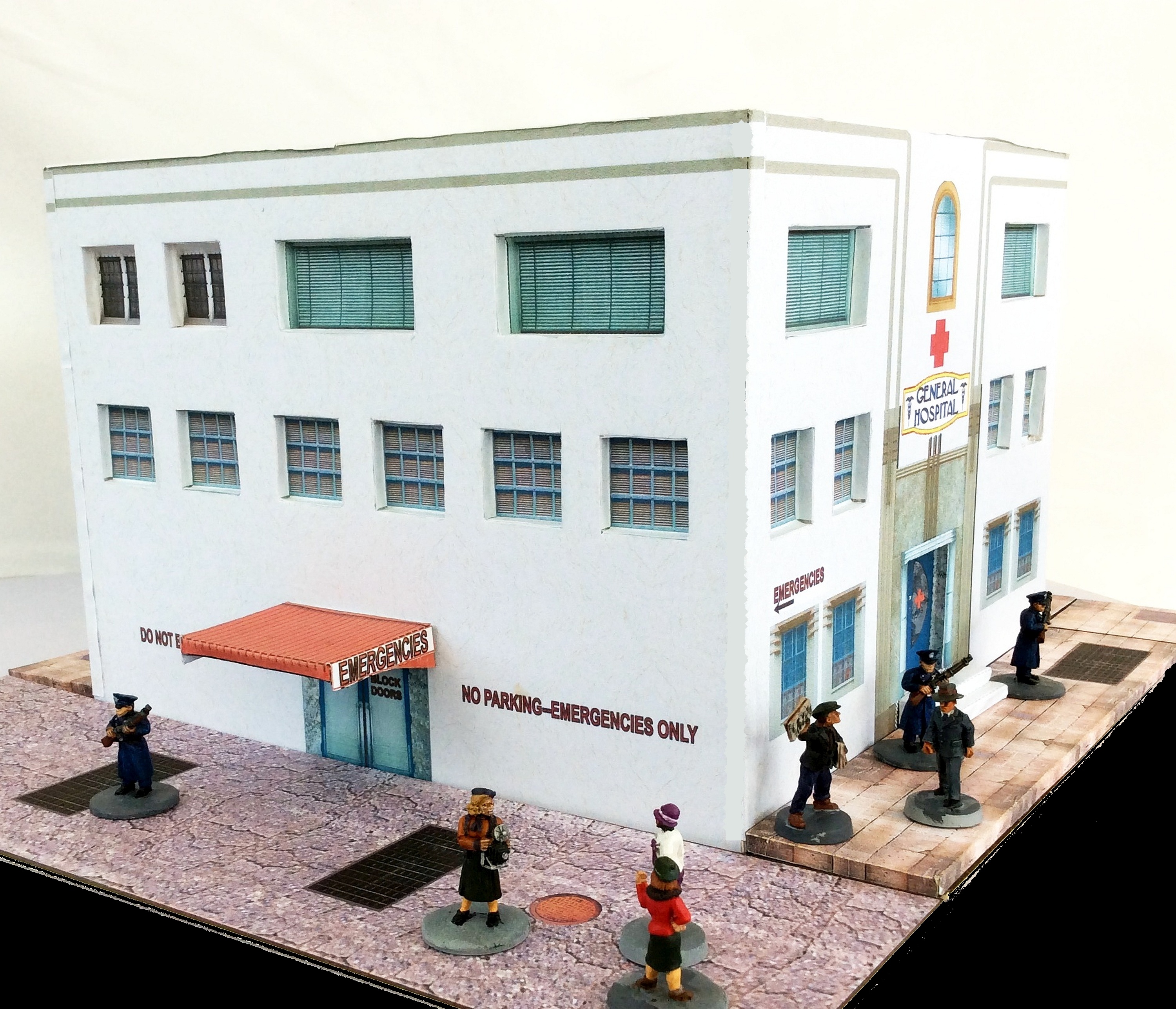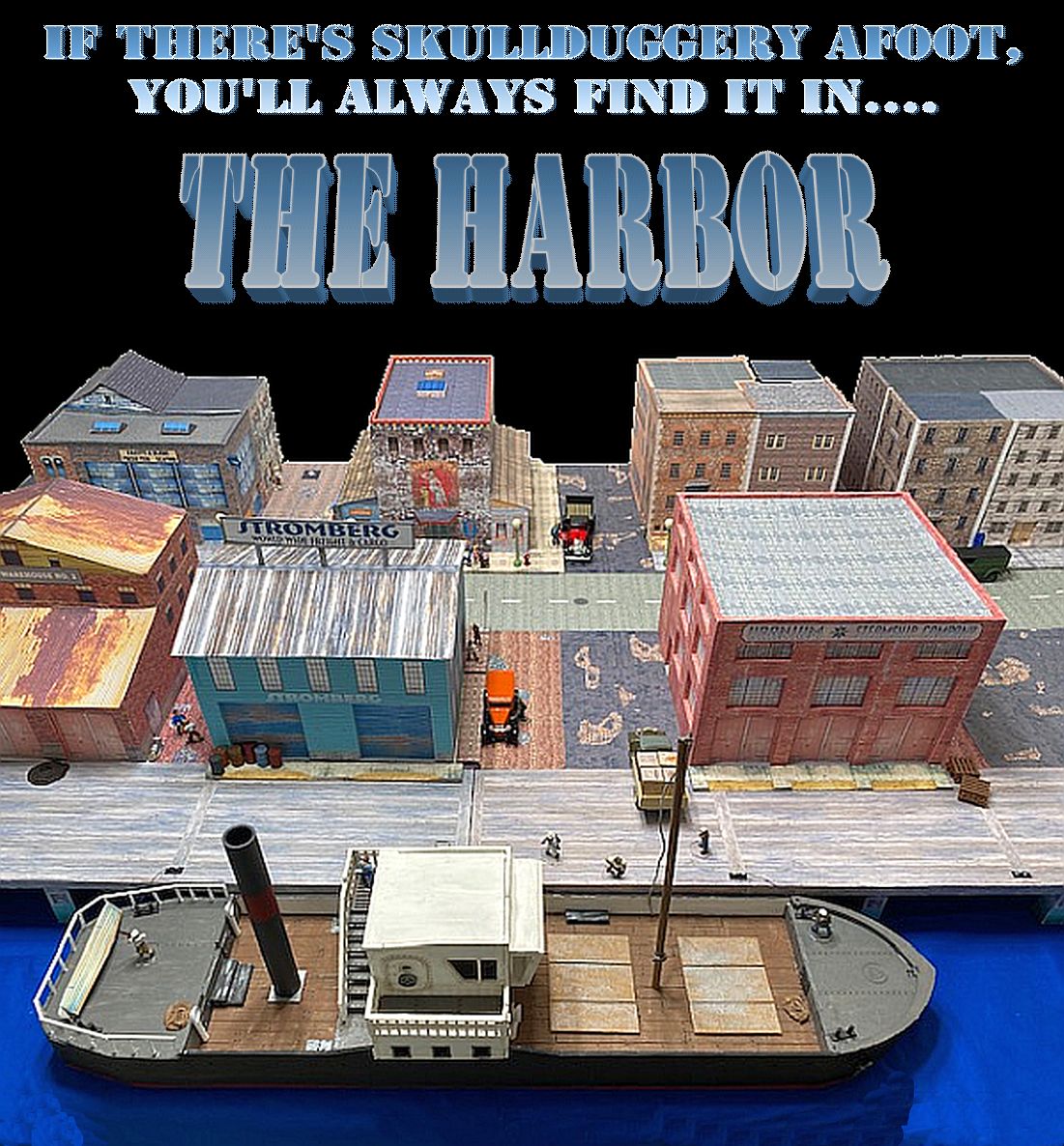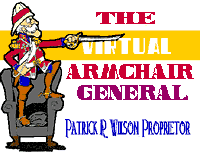
|
|
The Virtual Armchair General
|
Fall Back To The Virtual Armchair General's HOMEPAGE
Block Section 24-- Four separate buildings housing three small industries (one derelict), and a greasy spoon diner, "The Workers' Hash House,"
which may give you an idea of Pavel Drashko's, the owner and cook, politics!
Model and photos courtesy of Mr. Glen Allison
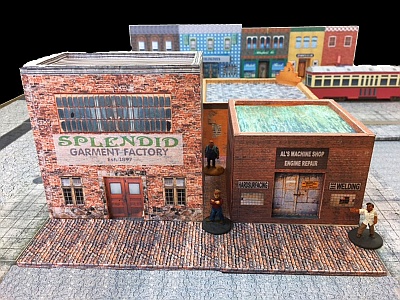 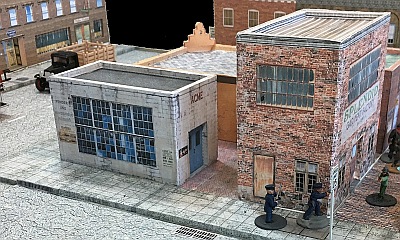 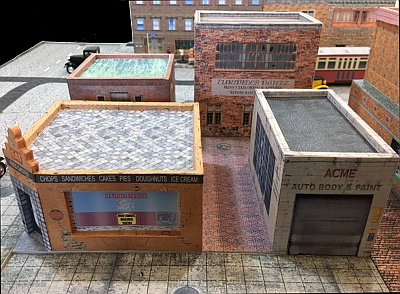 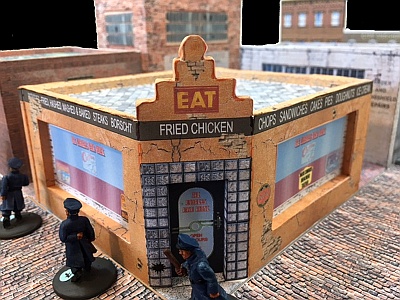 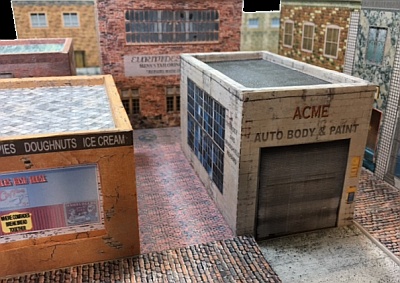 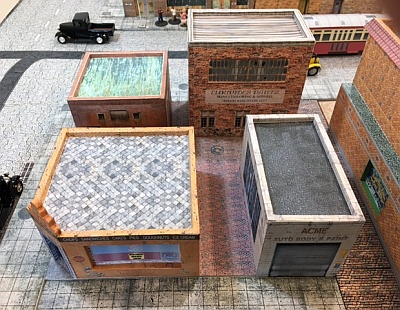  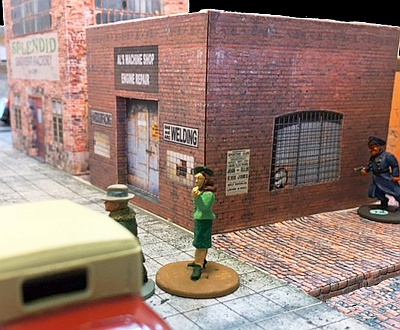
Other Significant Buildings Downtown Block Section 25--The Hawthorne Hotel/Inn, the site of the most spectacular attempted mob hit of all time when Hymie "The Pole" Weiss sent a convoy of cars tooling by and poured hundreds of rounds into the Hawthorne Inn where his arch-rival, Al Capone, was taking lunch. The Hawthorne Hotel was "Big Al's" headquarters in Cicero, the Chicago suburb he ruled as a private fiefdom. He escaped unharmed, much to Hymie's regret not long after in front of Holy Name Cathedral (Block Section #11, above). Closely modeled down to the smallest details, this Block Section is a faithful reproduction of the original Hawthorne Hotel, including the twin businesses operated on the ground floor, the infamous Inn and the Hawthorne Men's Wear Shop where "Snorky" Capone had all his muscle buy their nattiest suits. Models and Photos courtesy of Mr. Alan Lockhart
Block Section 26--General Hospital, the place that most residents of "Mean Streets" will visit sooner or later! Occupying the full 10" area, it has an Emergency Entrance
for Ambulances and "limp in" street customers. The Ground floor has offices for doctor's, administration, a waiting room and locker room for nurses. The second floor has private rooms for those who can afford them, while the top floor
has public wards --and most befitting "Mean Streets"--a high security area for holding wounded police prisoners and/or the insane. Model and photos courtesy of Mr. Glen Allison
Mean Set #27-- The Clarion Building --Home of The Clarion, the city's Newspaper, and Radio Station KYJ. This is
where your crime fighting reporters and photographers come back to have their stories and pictures published every day. From Torchy Blaine to Clark Kent to Brenda Starr, famous newspaper men and women have always been on the forefront of the
war on crime, and now your own characters can join the fight from their own Bastion of Truth!
Besides the power of the printed page, Radio KYJ is the voice of the city heard by everyone within earshot of a radio. Covering live-breaking news as well as broadcasting entertainment programming by local actors and writers,
this station can affect public opinion for and against politicians, law enforcement, and the underworld.
The Ground Floor Annex has two popular businesses in the Downtown area--Signorelli's Sweetshop and Papadapolous's Tobacco Shop. The former provides candy, pastry, ice cream, and the latter cigars, cigarettes, and
pipe tobacco--making each providers of the lesser vices in town under the thumb of the greater ones.
Model and photos courtesy of Mr. Glen Allison
Block Section 28--Dullard's Department Store-- The largest and oldest Department Store in the city. The Dullard family has operated this enterprise through three generations
to the present, and has never sold anything but for hard cash. Their unadvertised motto is "Credit Cheerfully Refused," and it has always been true--except for the "cheerful" part. Their buying power gives them an unfair advantage over most
small retailers, and their rapacious practices have kept them profitable, if not popular.
Given the family's archly conservative views and practices, it seems odd to not a few that the only renter of space in the building is the Kit Kat Klub, the swankiest and hottest Jazz Night Club in town. Only the very best acts
perform here, and the city's high rollers come for the first class food, drink, and entertainment. These include the flashiest and most notorious gangsters--even rivals--who (usually) observe an unofficial truce when they bring their women and
associates. And, though it's one of the city's open secrets, it appears that high stakes gambling is available on site--somewhere--as well.       (Owners of the Kit Kat Klub interior as part of "Mean Sets" will recognize that its exterior front wall is identical to that shown here in the full context of its location in this buildingn.)
Return To Top of List
O'Leary's is a five sided building measuring 7.5" x 2.5" x 4" x 8.75" x 6" along each wall, and standing 4.75" high. Paddy's small lot is 7" x 10", deeper than usual as no sidewalk will be placed along the 10" street side, allowing more space for Paddy's usual stock of junkers and lemons. His small office sits neatly in the center, with space behind for characters to hide. NOTE: All vehicles shown are from the assembler's personal collection. Buyers of this model will have to find their own junkers to form
Paddy' inventory!
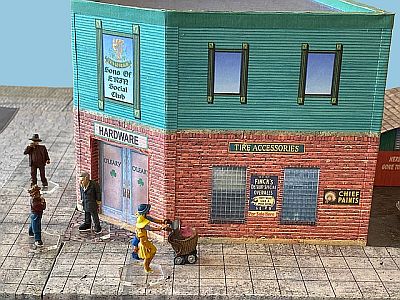 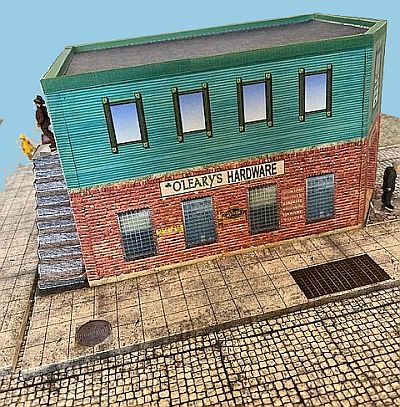 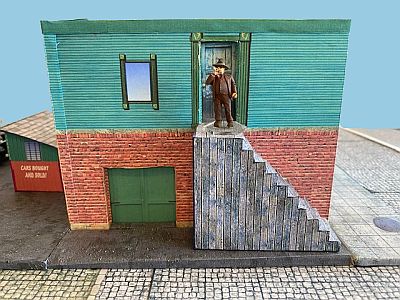 O'Leary's back wall with staircase to the "Social Club," here shown with the cardstock stair assembly provided with the PDF. 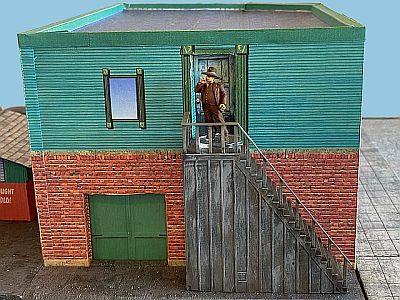 The same back wall, but here with the resin staircase model separately available as part of the "Mean Streets Scatter" range. 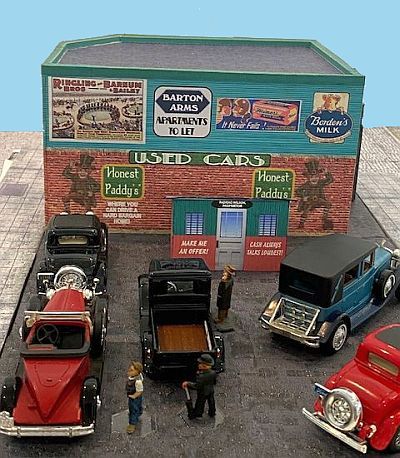 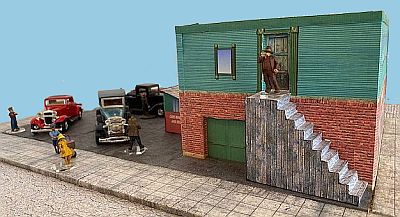 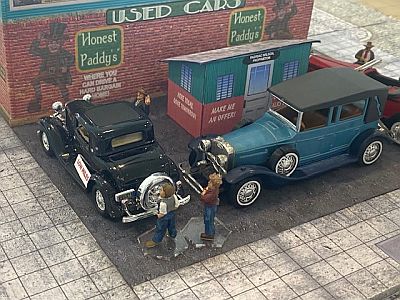 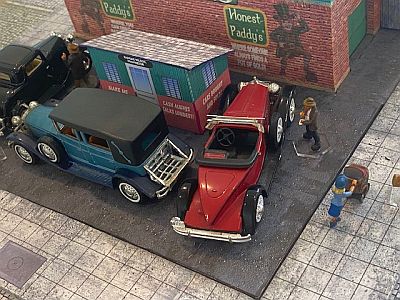 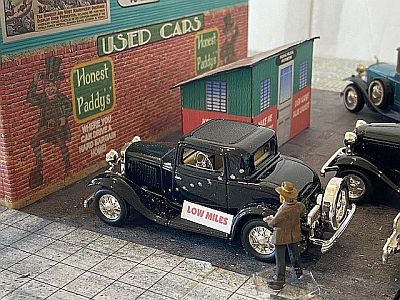 A classic example of the "hard bargain" Paddy is famous for....
A major employer and source of customs and other revenues, a busy harbor allows for a busy city! But wherever ships deliver and load rich cargoes, there are those elements lurking to steal what they can. And wherever longshoremen are needed, there are corrupt labor interests trying to control everything. But more than organized crime, there are other risks to visiting sailors and landsmen who come to the Harbor. Various businesses offer services of all kinds not available elsewhere, and they're not above taking advantage of the unwise and unwary. Still, when an expedition to some far away land must be outfitted, here is where one can find all that is needed. People needing to leave the country as quietly as possible
can come down here to book passage on a Tramp Steamer, or privately arrange for secret cargoes--of all sizes--to be sent out or brought into the country. Everyone is willing to deal for extra money on the side, in good faith or bad, but the Harbor
is where all adventurers eventually go!
Block Section 29--The Wharf-- Another unique offering, this piece is a 30" long, 8" wide, and 2" high above the water key portion of The Harbor,
along which vessels of all kinds can tie up prior to loading or unloading whatever cargoes a Pulp or Gangster scenario might involve. It comes with an optional and equal length of "night water" textures to lay down in front, though builders may
substitute their preferred water surfaces. Judicious printing permits the Wharf to be any length desired.
Block Section 30--Uranium Steamship Company Warehouse--The newest warehouse along the Harbor,
it is the property of the company which has recently opened an office here. With ambitious plans to dominate the shipping industry along the coast--if not the world--its owners, ship captains, crews, and longshoremen aggressively
compete with any and all others, but particularly Stromberg. Rivalry extends to brawls between employees of both companies, and even claims of sabotage. While owning a growing fleet of its own freighters, Uranium seems willing to do business
with even the most disreputable tramp steamers carrying cargoes of uncertain legality, as well as dealings with a number of unfriendly foreign governments, in order to claim every available nickel of seaborn commerce. Longshoremen frequently--
and mysteriously--work late many nights offloading odd cargoes and furtive passengers from some of these tramps, often with heavy security.
The Warehouse is 9.5" square and 7" high, with three floors. Three loading doors face the Wharf, and three more the street behind for maximum storage
and dispatching speed.
Block Section 31-- Stromberg World Wide Shipping & Freight-- The oldest, best established shipping company in the Harbor, they are significant
employers of longshoremen and a major source of revenues to the city. Founded three generations ago by a Swedish Captain, the Stromberg family is part of the city's heritage, despite their support of Prohibition and with no evidence of engagement
in bootlegging, no matter the potential for huge profit. Indeed, the family supports a variety of charities and is the largest contributor to the City Mission soup kitchen. However, the increasingly bitter rivalry between Stromberg and Uranium is
beginning to wear even on this family's patience and goodwill.
The Stromberg Warehouse is considerably smaller than Uranium's at 5.5" high, 9" wide, 8" deep, with two floors, and two large loading doors facing the pier and the street behind.
Block Section 32--Shanghai Lil's-- The most dangerous saloon on the coast, where more people are sent to the hospital, jail, and morgue than in the entire city. And then there are those who simply are
never heard of again. Widely believed to be the heart of criminal activity in the Harbor, it's flamboyant namesake owner is herself without a police record. Believed to be involved in activities in Chinatown, too, her wealth and influence
provide her a special status in the City's Underworld.
The block is 10" square and Lil's is 7" high, while the shops along side are all 3" high at their roof peaks. Besides Lil's, other businesses in the Block include
Israel Hawkins, seller of maps and navigation equipment, Lloyd and Bridges Marine Salvage, Burlyman's Tattoo Parlor, and Sven Torgersen, Ship Chandler.
Model and photos courtesy of Mr. Glen Allison
Block Section 33 Kravitz & Blume's Fish Market-- This Block has the Harbor Master's Office next to Kravitz & Blume, a Waterman's flop house (the Backwater Inn), the Uranium Steamship Company's Offices, and the "Joe Hill" Union Hall for the Local Dock Workers Union, as well as district HQ for the International Workers of the World (I.W.W.). Between agitating Socialists on the one hand, and Mob attempts to control Labor Unions on the other, all kinds of action can be played out here. The 10" square Block is just under 6" high all around, though the Inn has a slightly higher gabled roof.      
|
|
Like the Chinese, Irish, Jewish, and other neighborhoods of "Mean Streets," the Italian emigrants tend to seek their own kind in their own space, conducting their businesses (legitimate and not) as best they can. Providing services and goods desired by their own--and appreciated by all--they contribute to the character of the entire town. (Watch for Colosimo's Restaurant and more businesses opening soon!) |
Block Section #2-- Consisting of Anastasio's Apartments, None Finer Diner, Manzarelli's Market, Helth Ice Co., AAA Best Shoe Shop, Sbabaro's Funeral Home, and Scott's News Stand (all 5.75" high, except the Shoe Shop at 4.25" and the News Stand at 2"). The News Stand comes complete with newspapers in racks on the back wall and actual period "Spicy" Pulp Magazines on the counter and sidewalls. Manzarelli's Market is on the ground floor, while those above contain "Rooms To Let," the offices of "Antonio Falco, Attorney at Law," and Medium "Madame Gazonga's" Seance Room (very popular with the Ladies since Valentino went over). Sbabaro's is also accurately modeled after the actual building (note the photo), the site of Chicago's most famous Gangland Funerals--one of the few places where the Underworld Elite could meet on neutral turf--and give each other "The Look."
Display Model Constructed and Photographed by Brian Weathersby.
Block Section 34 Italian Business Block and the Metro Diner-- The second "Mean Streets" Block emphasizing the Italian Neighborhood common to so many great American cities.
Here will be found the Nitti's Drug Store, the Garibaldi Brothers Barber Shop, and a Locksmith's Shop run by Mr. Capelleti. Behind them all is the Metro Diner occupying a converted street car.
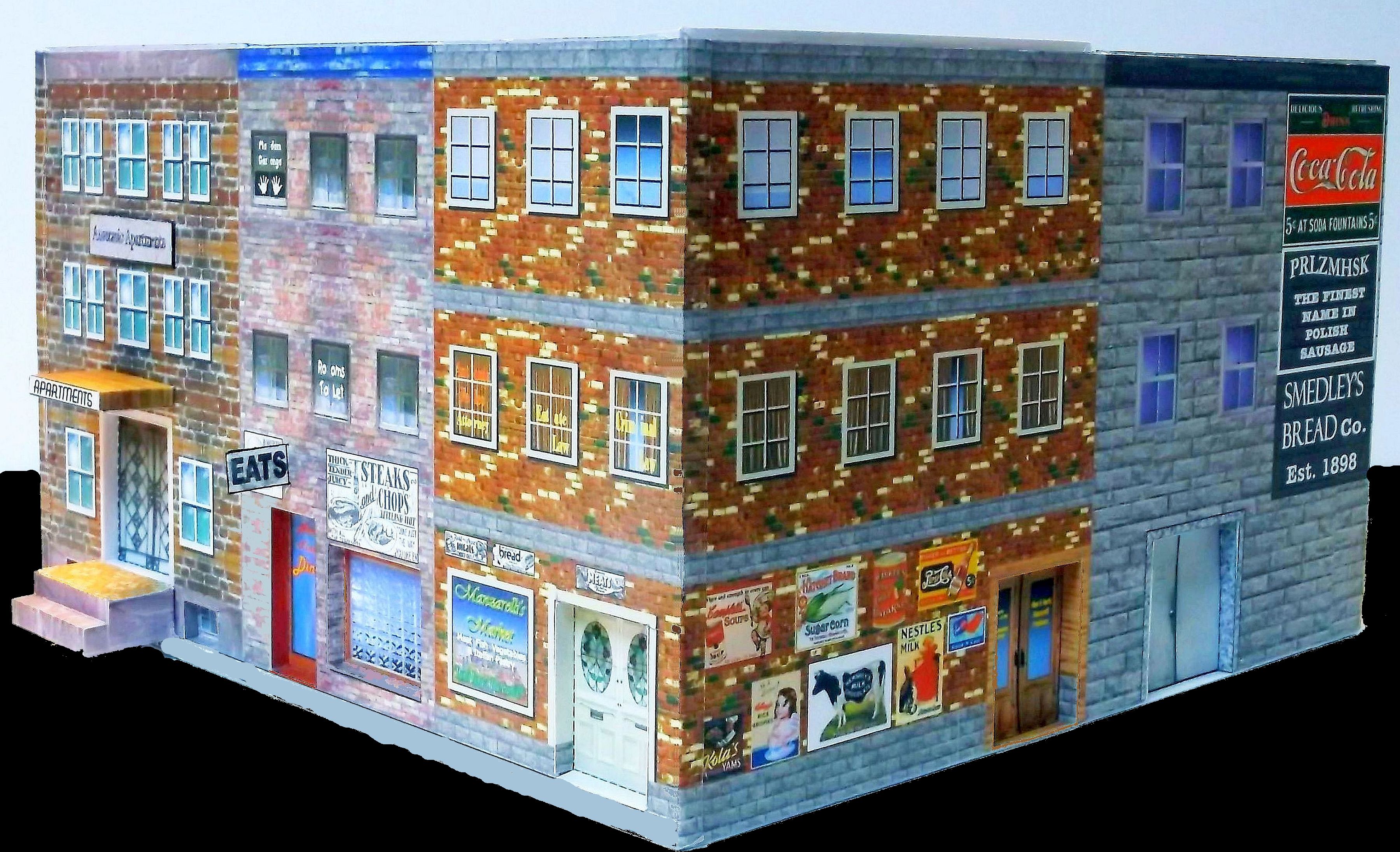
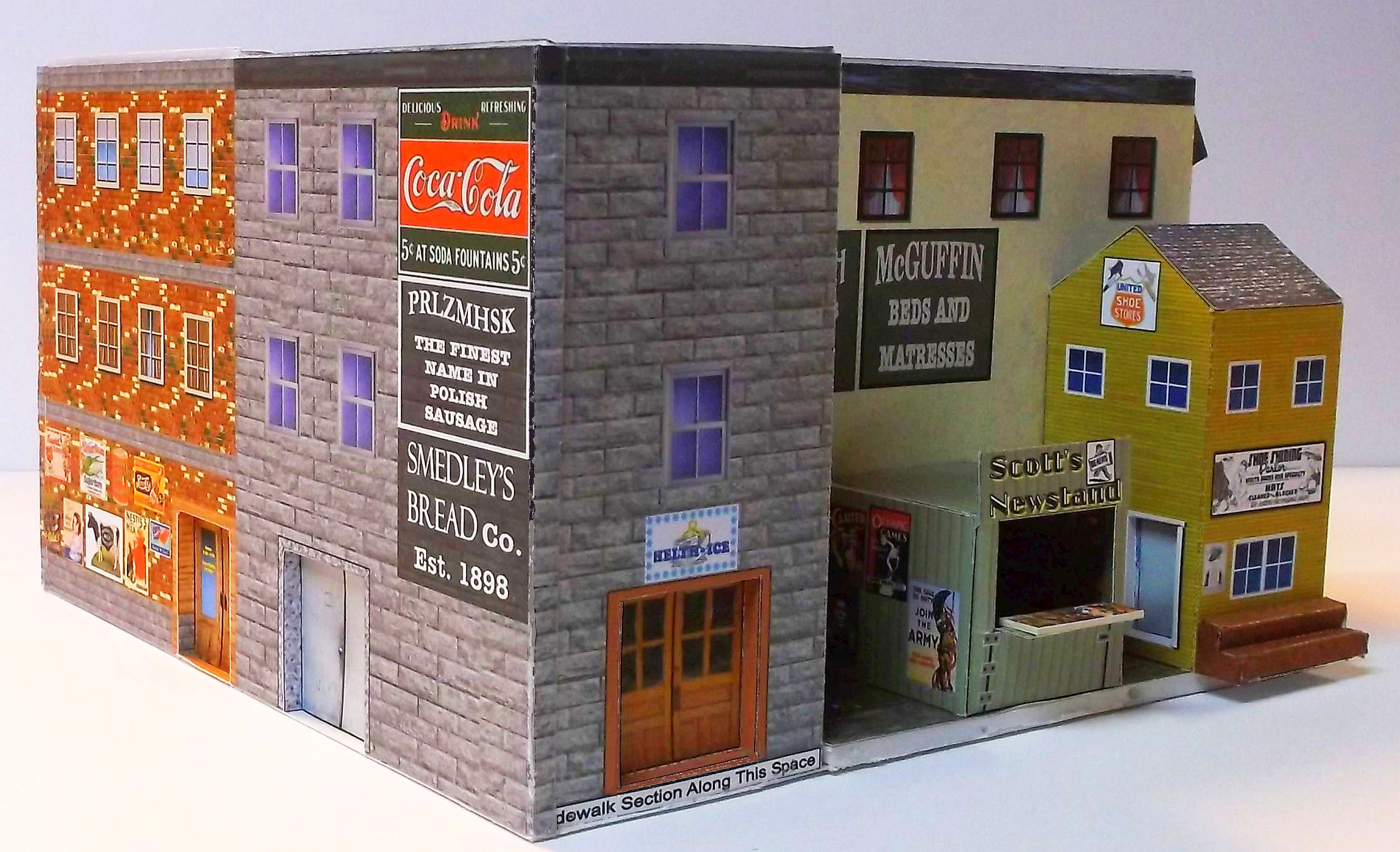
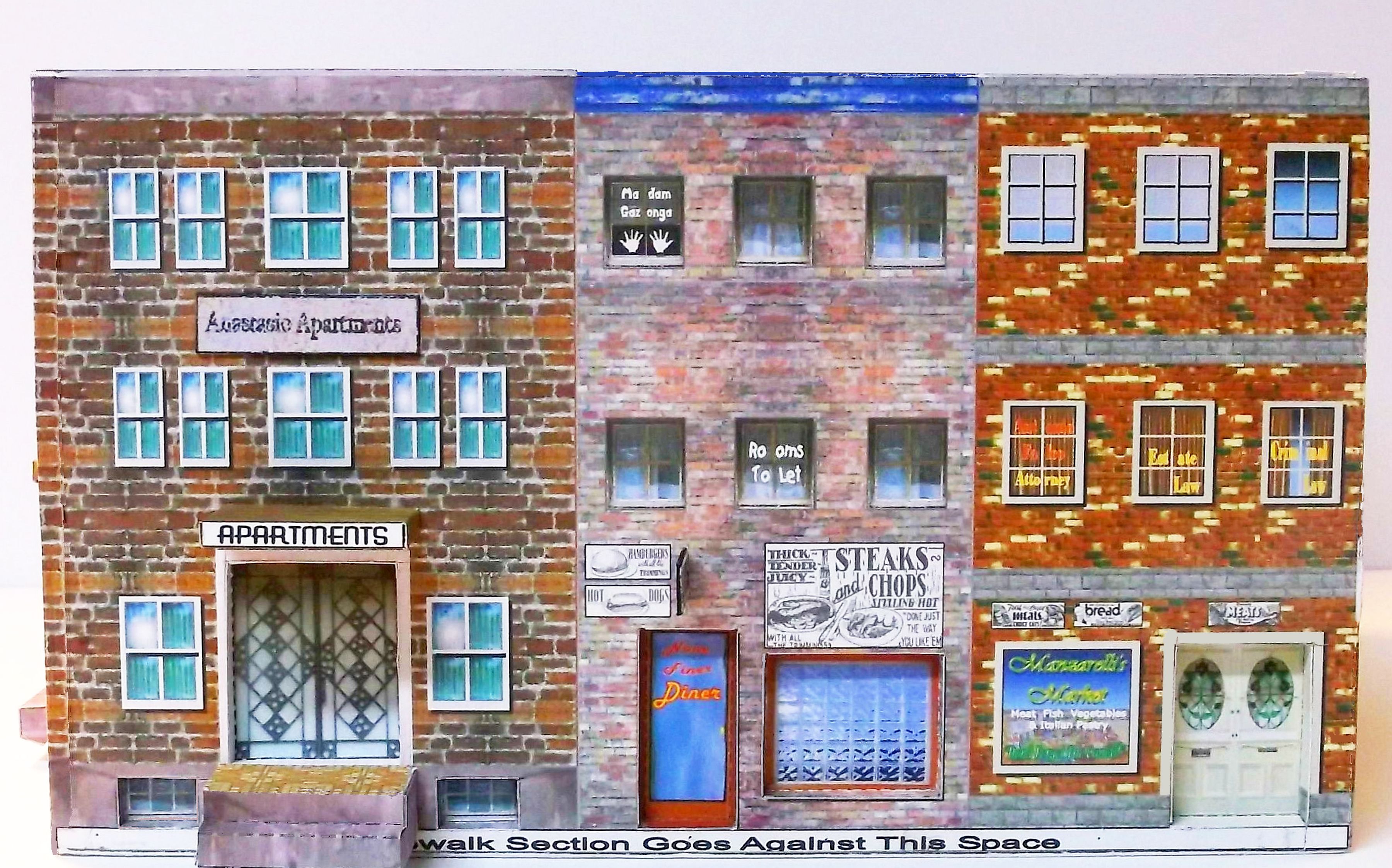
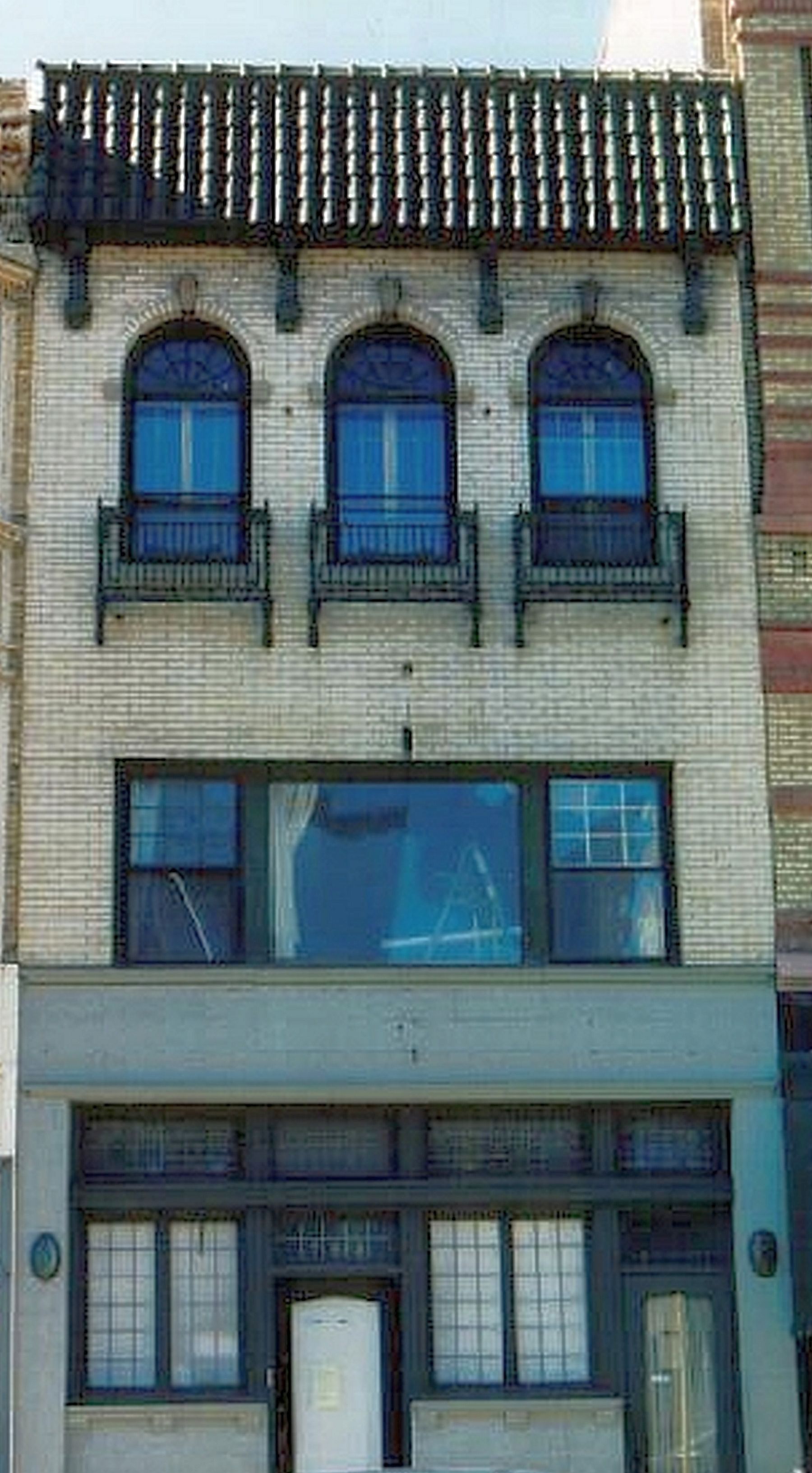






Click Here To Revisit "Mean Streets" Block Sections 1-20
Fall Back To The Virtual Armchair General's HOMEPAGE All text, photos, and artwork are COPYRIGHT©2003 by Patrick Wilson. Names of individual product lines are trademarks (TM) of the manufacturers.
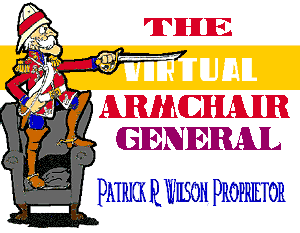
![]() FAVORITE LINKS
FAVORITE LINKS
to war game and history sites on the web
They may not be used without written permission.
Contact The Virtual Armchair General
